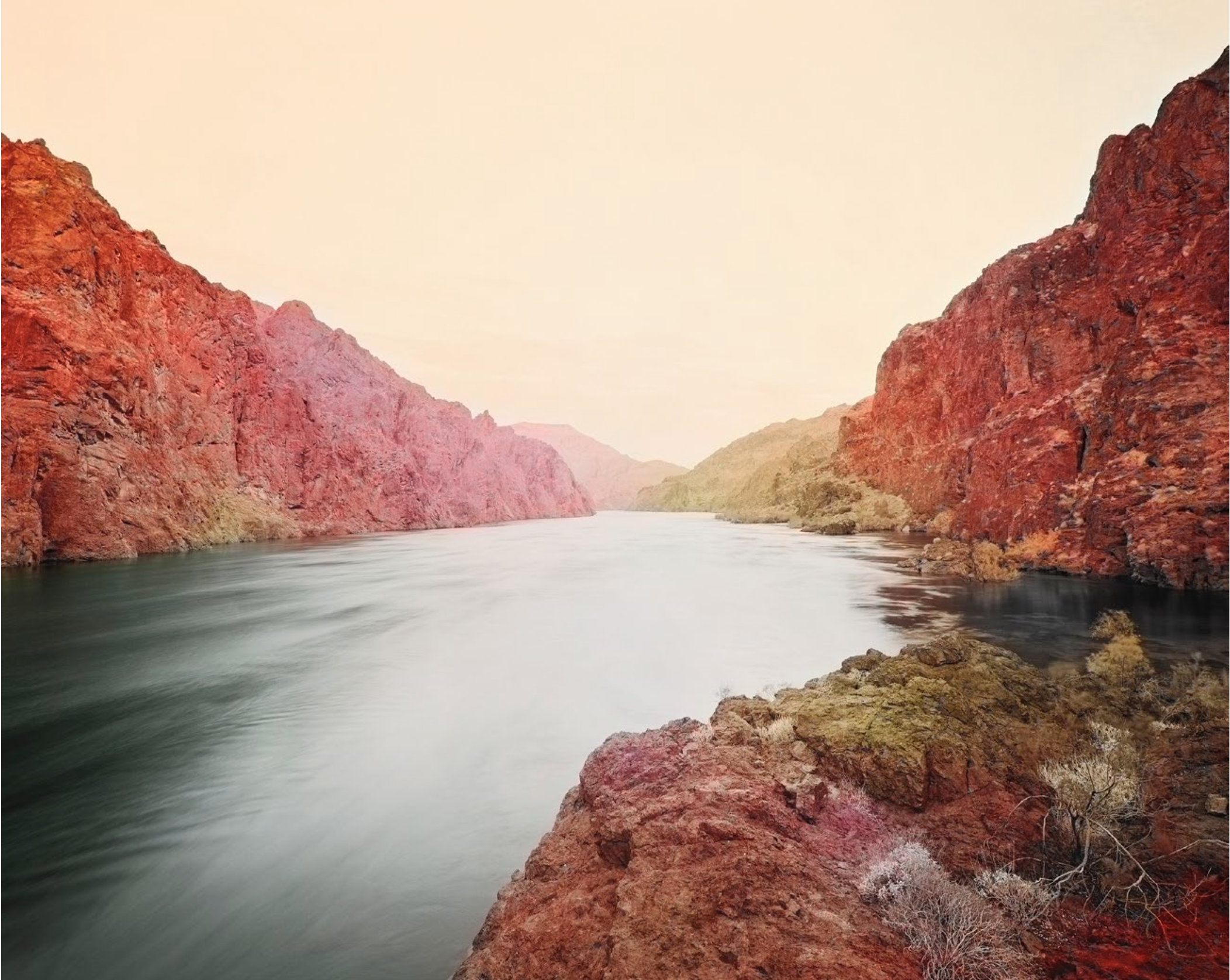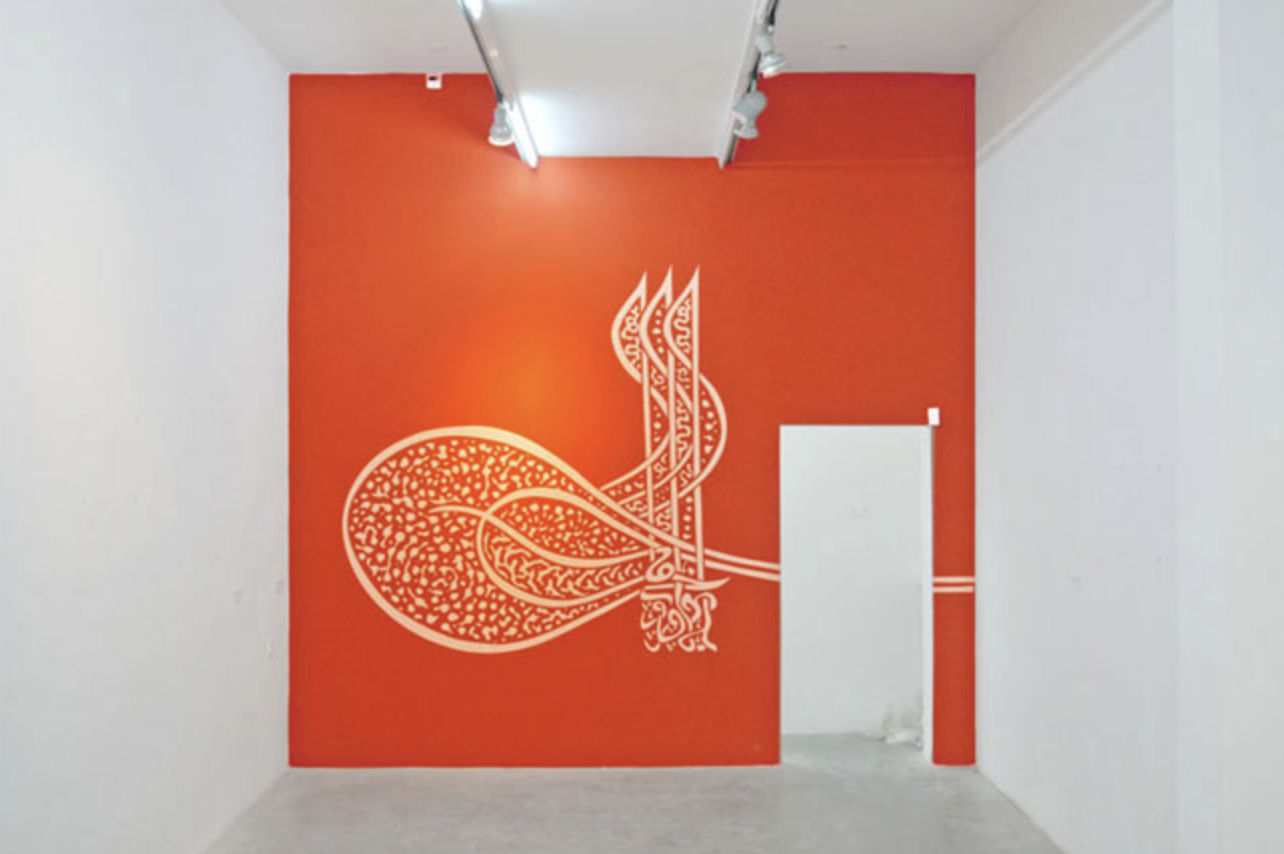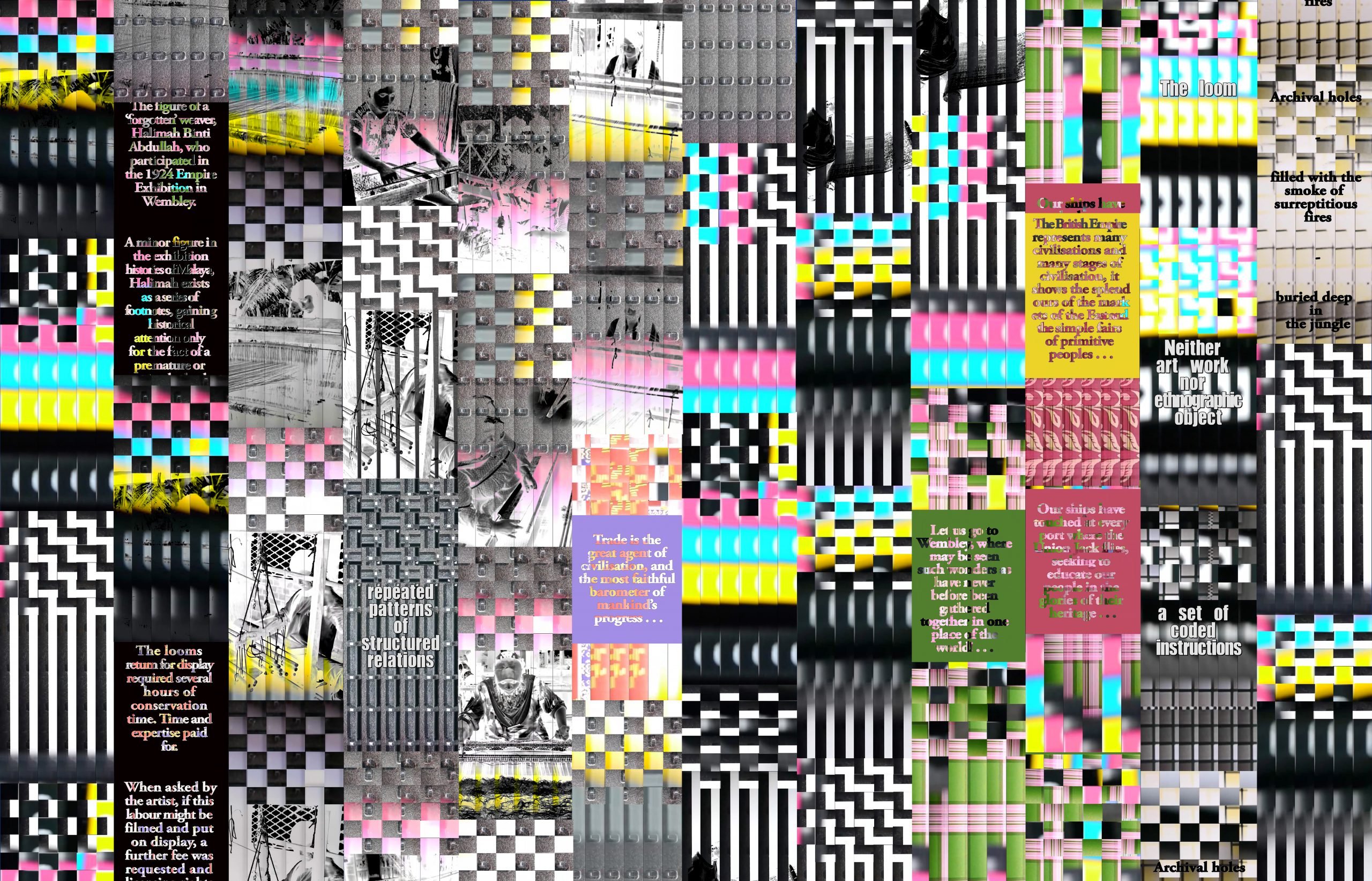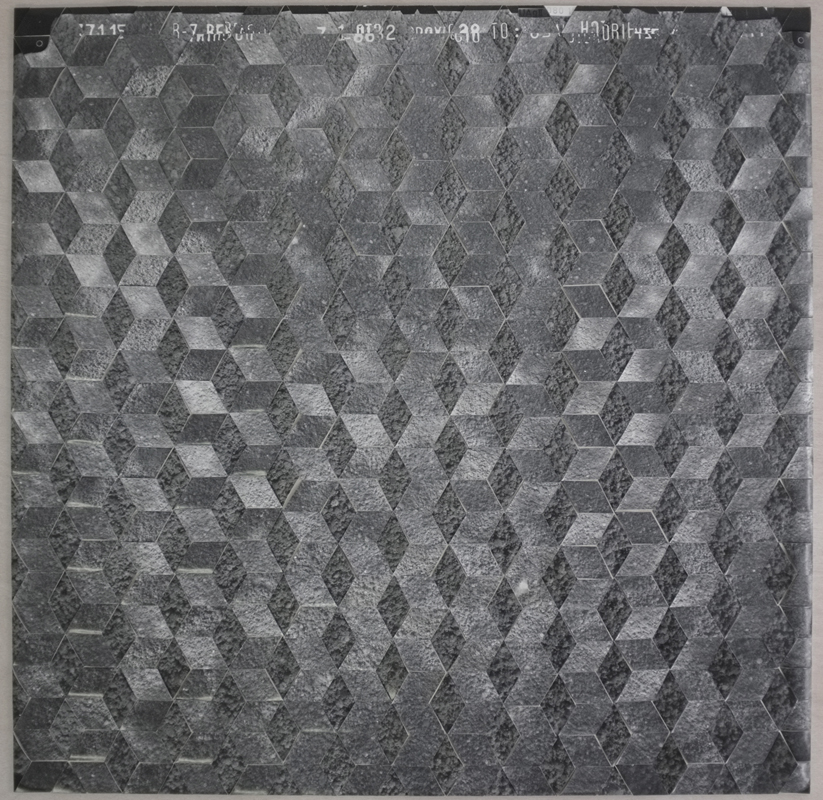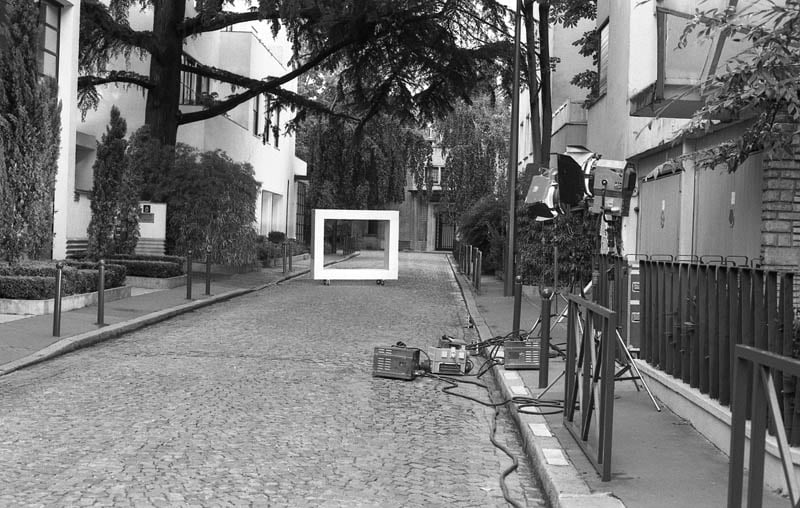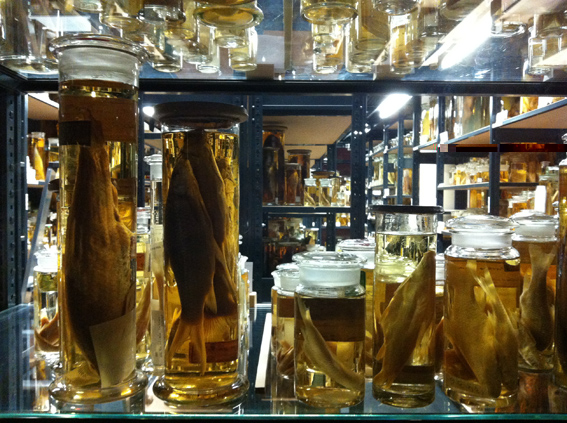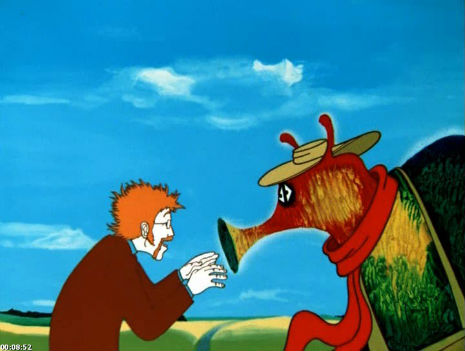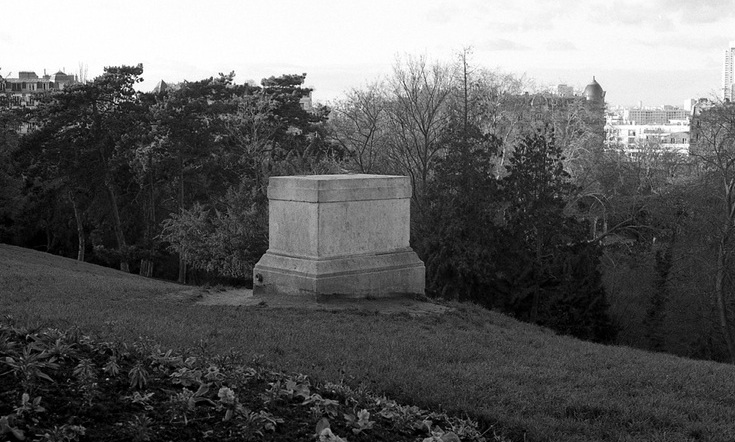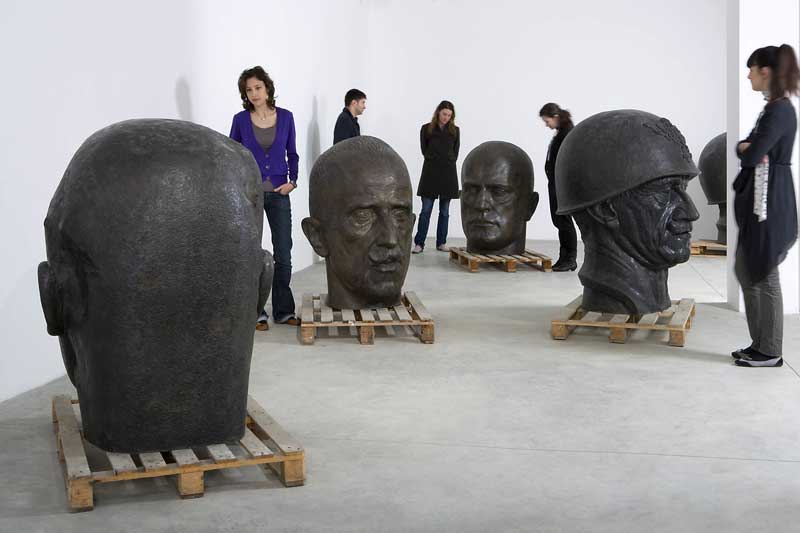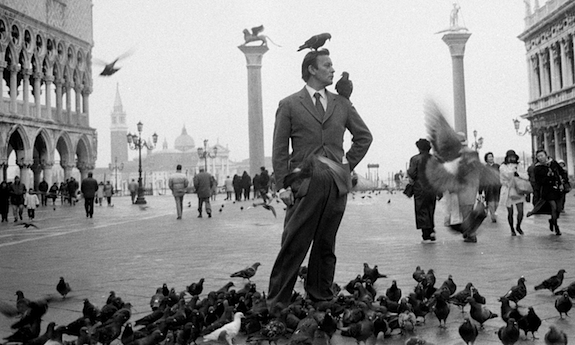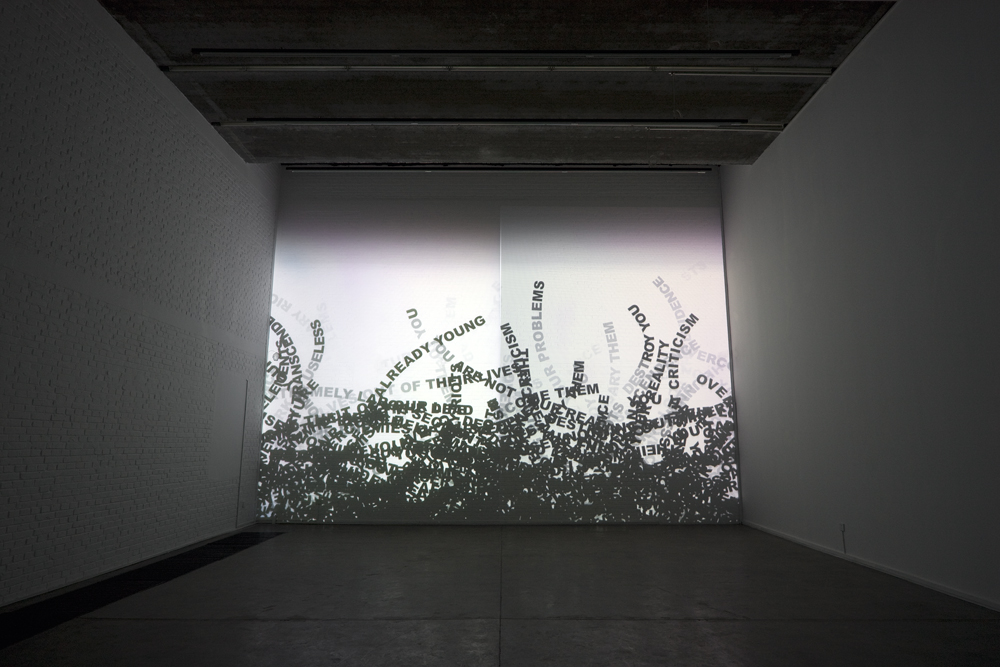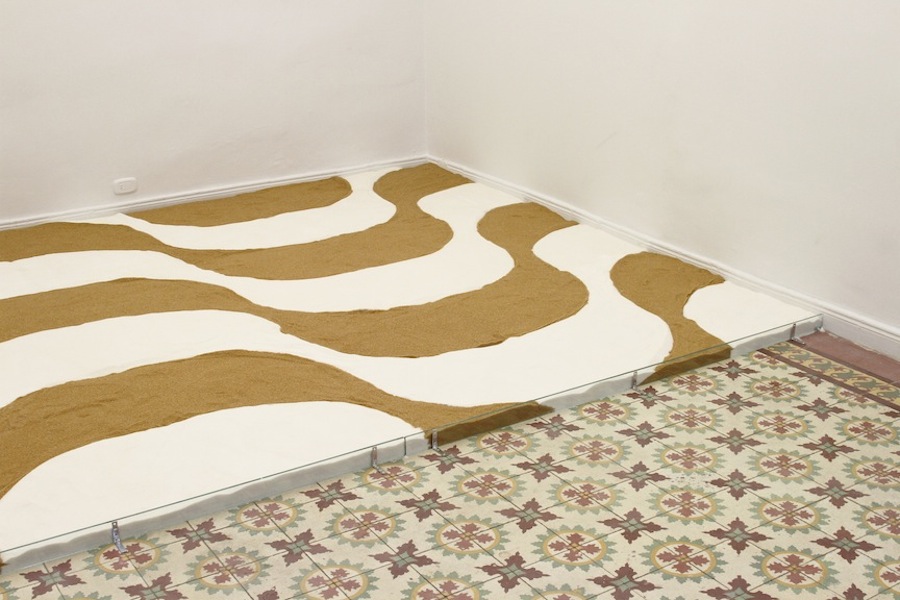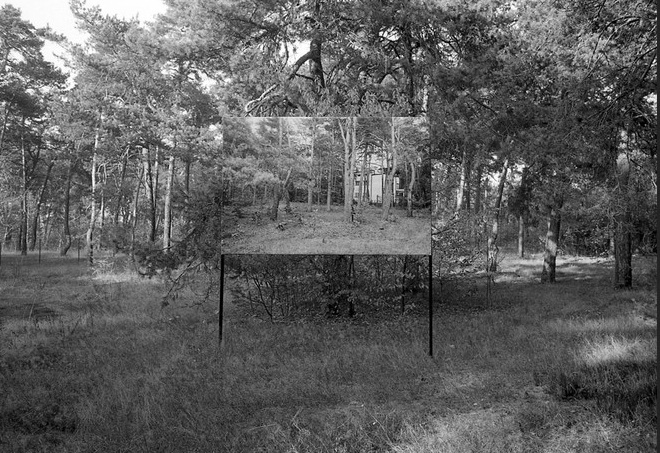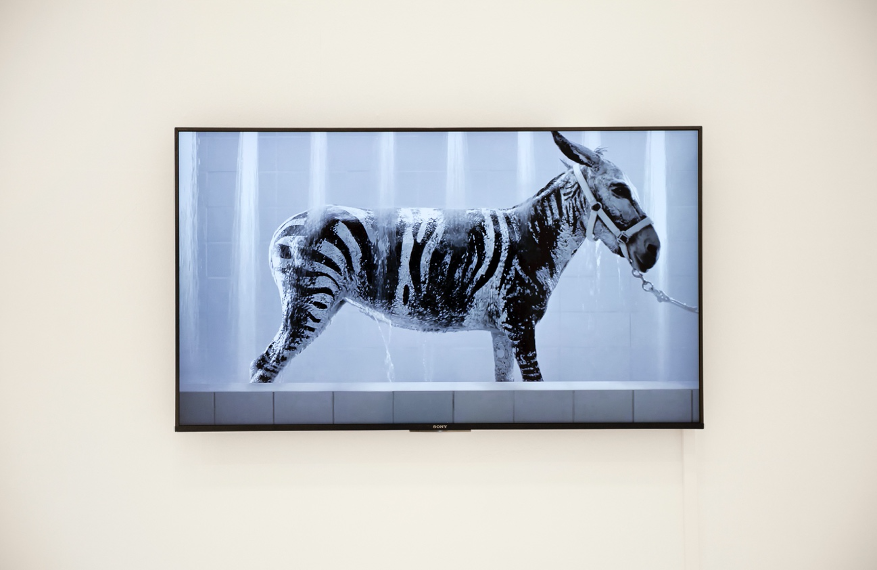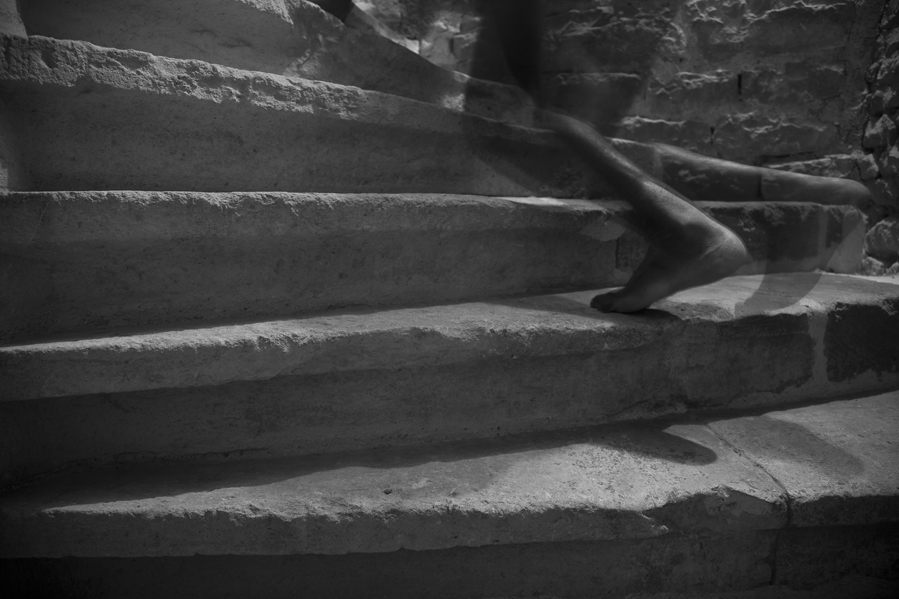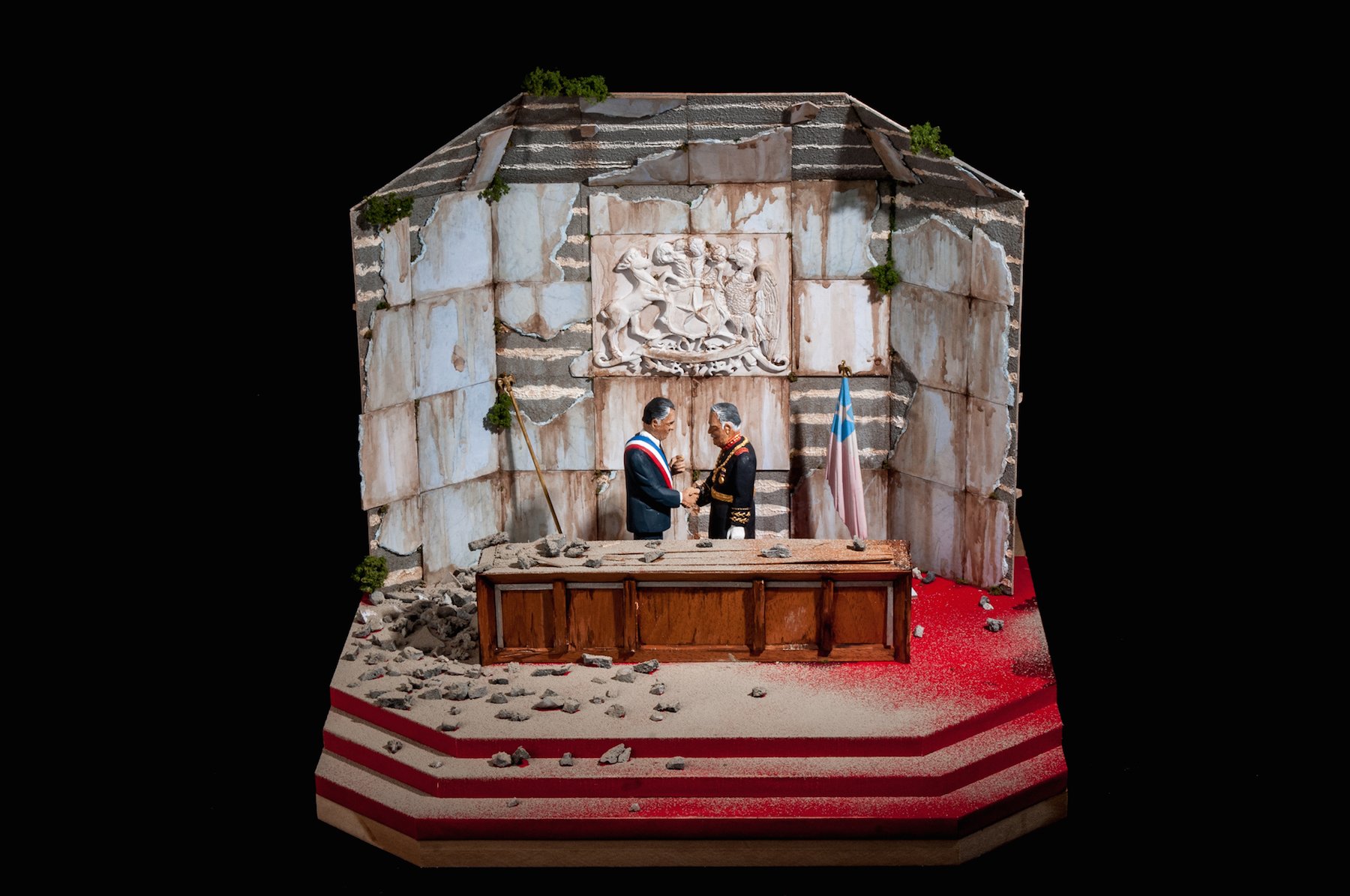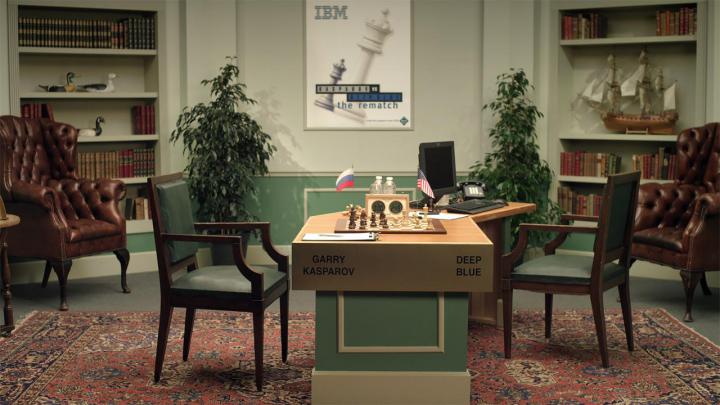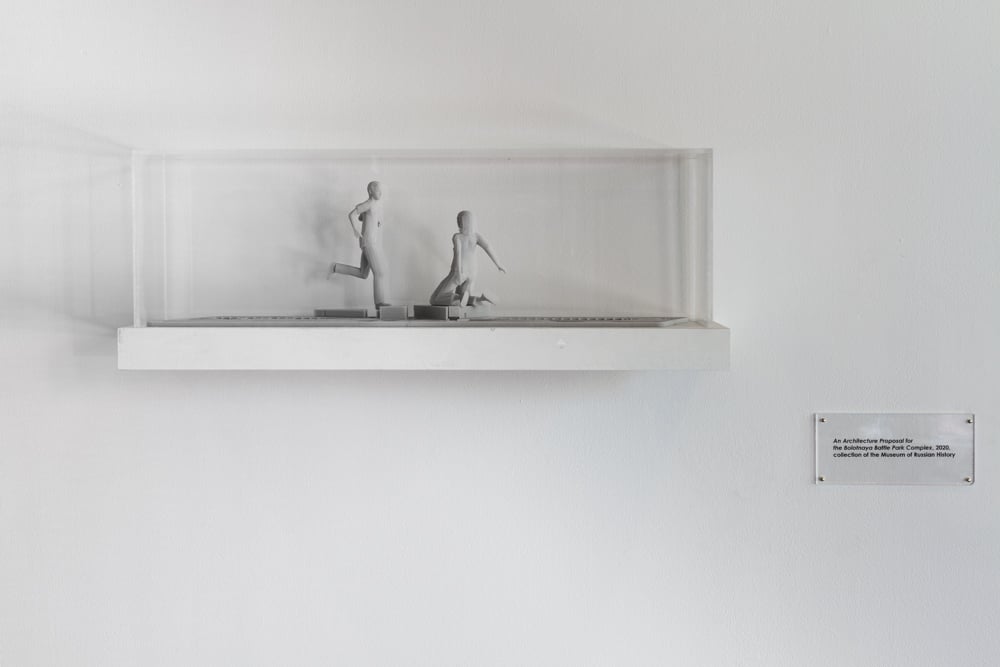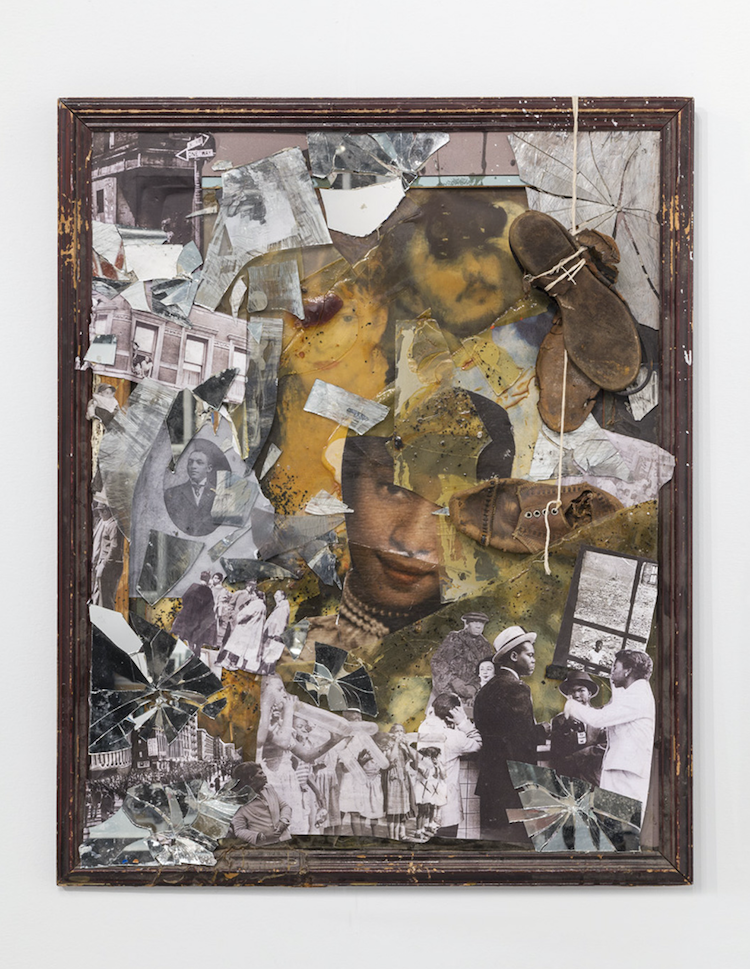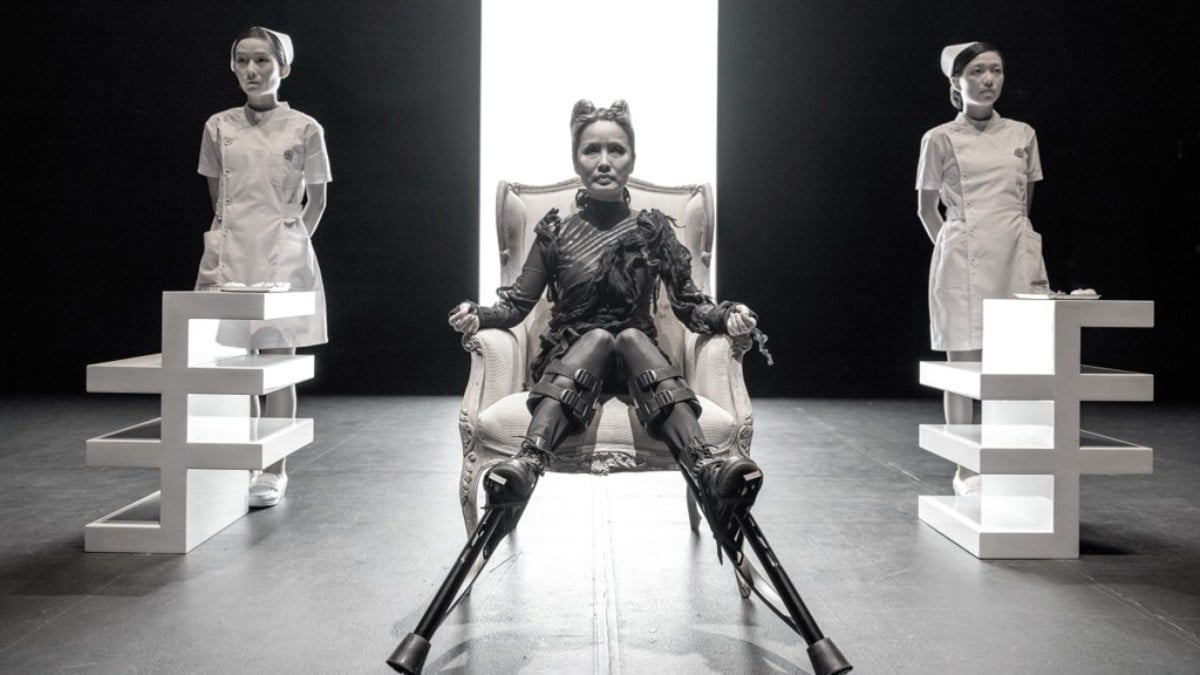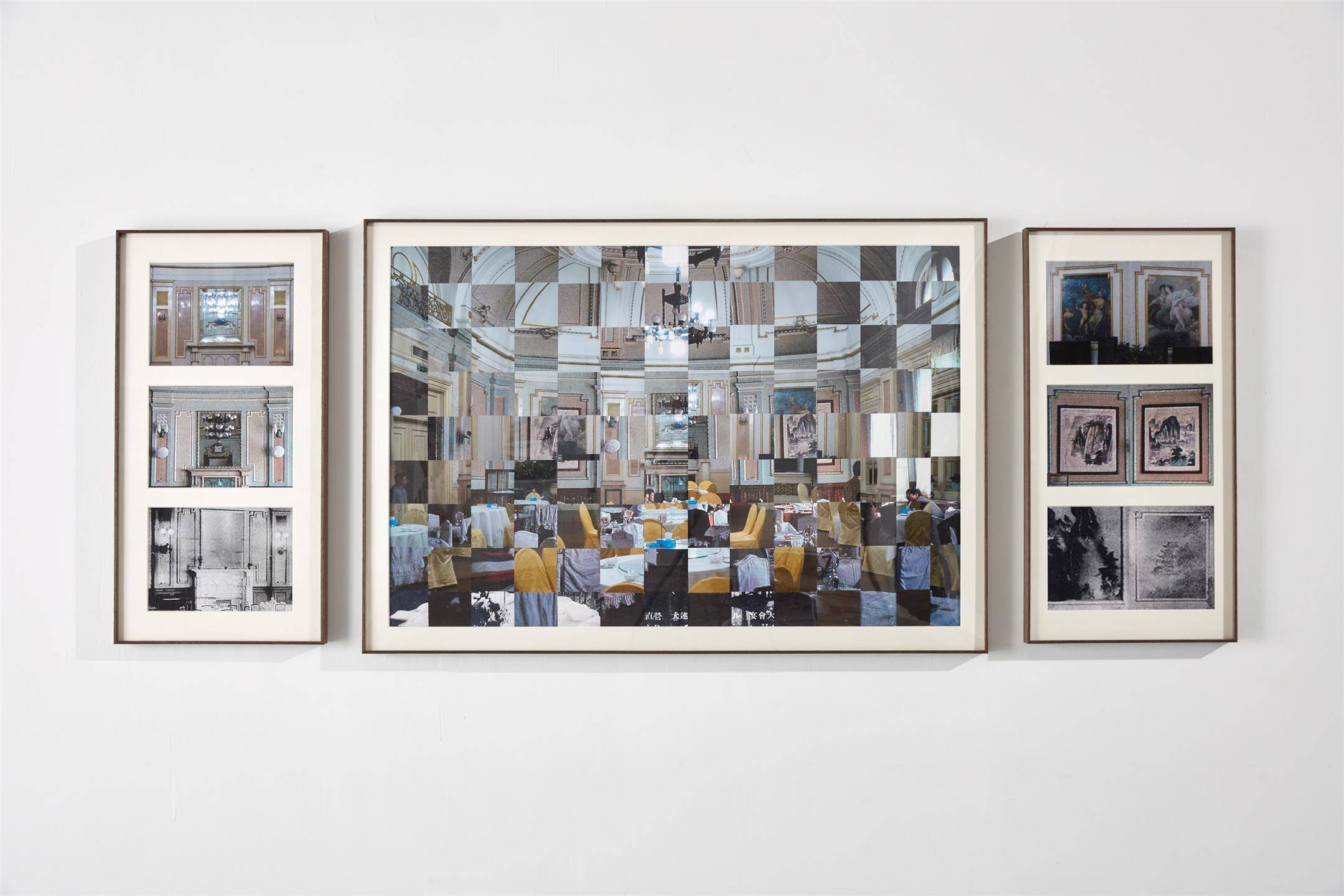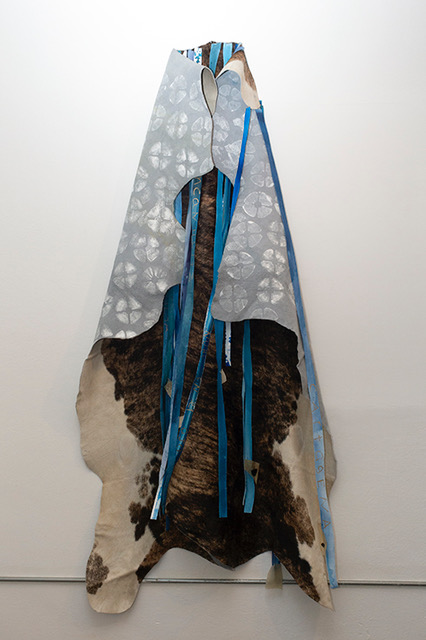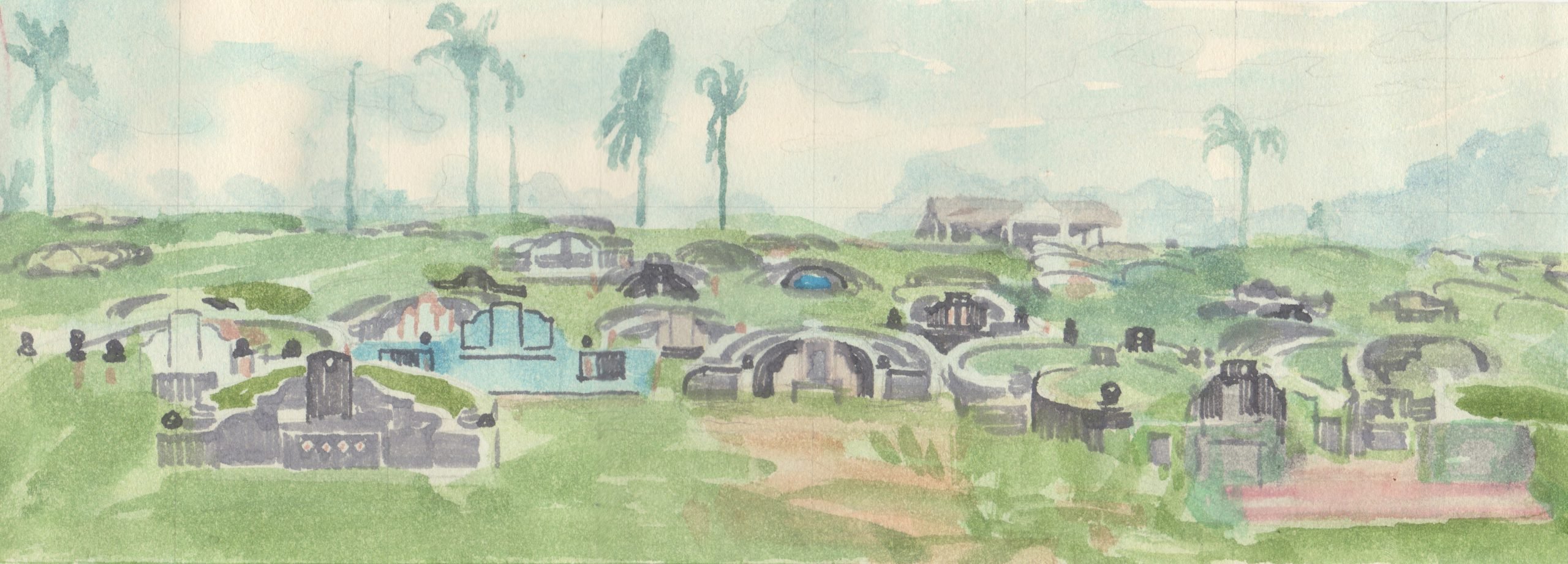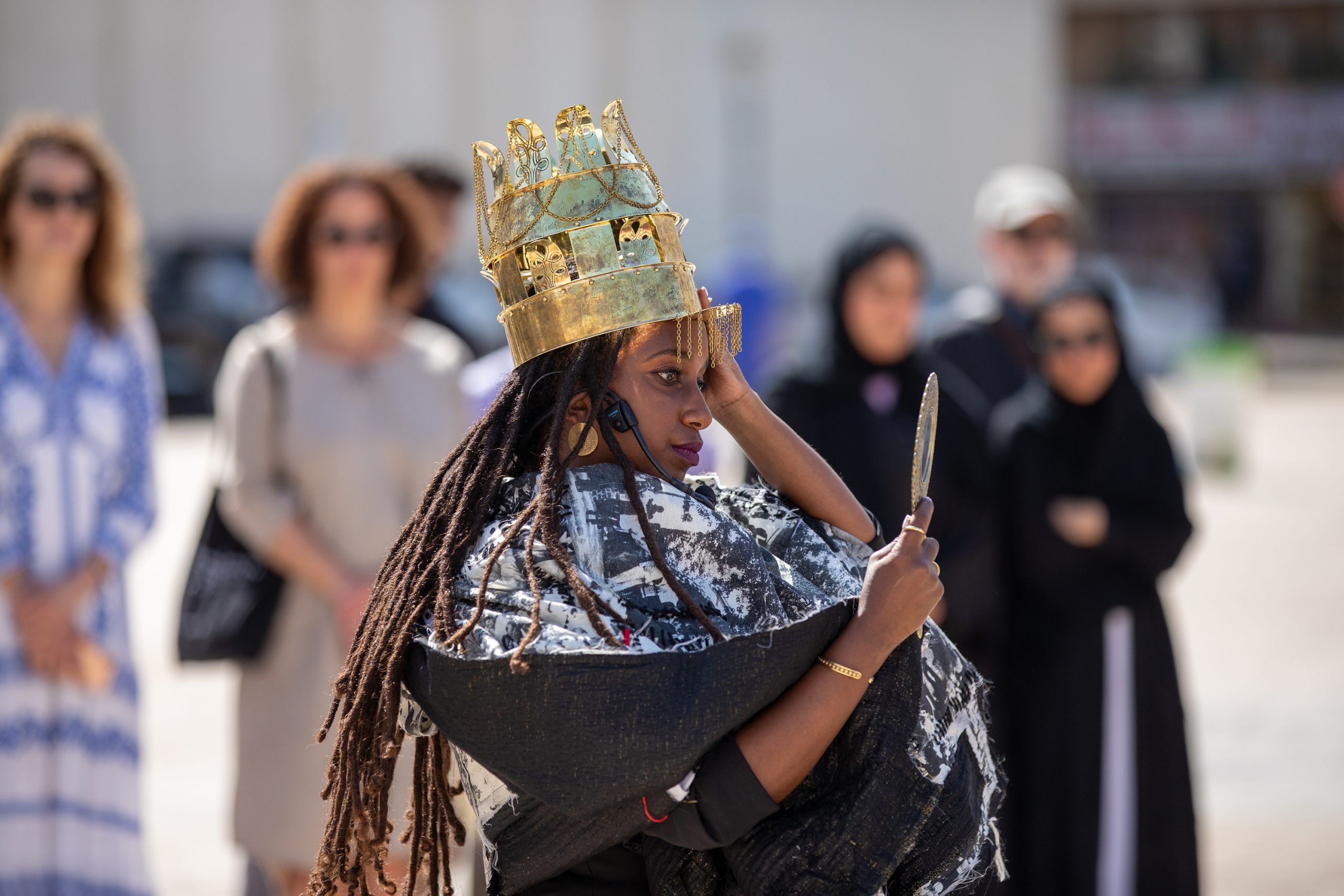
© » KADIST
Manuel Correa
Manuel Correa’s documentary Four Hundred Unquiet Graves is a powerful and vulnerable visual essay about the descendants of those who were disappeared during the Spanish Civil War from 1936–1939. The film reveals the spectrum of violence that surrounds the war, namely the impact of thousands of forced disappearances on different generations. Surviving family members are haunted not only by the absence of their grandparents, but also by the overwhelming grief that lives in their parents.
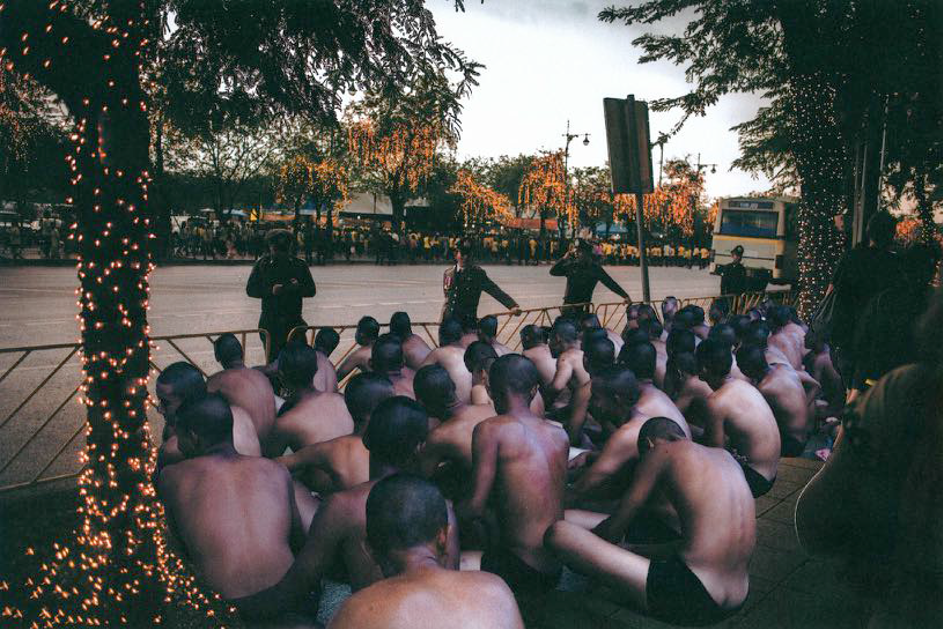
© » KADIST
Harit Srikhao
Young men are often found together in uniform, already influenced by ideology and bodily and style stereotypes. The majority of these photographs are linked to the memory of the military coup d’état in 2014 when the artist was very young. The imagination always remains at the center of Harit Srikhao’s work and may be defined as an arm against convention.

© » KADIST
Gan Chin Lee
Drawing & Print (Drawing & Print)
In Studies of Chinese New Villages II Gan Chin Lee’s realism appears in the format of a fieldwork notebook; capturing present-day surroundings while unpacking their historical memory. The watercolor images on each note paper document the artist’s visits to various Chinese ‘New Villages’ in Malaysia. The studies, some in color and others in grey-scale, from this series include architectural ruins, portraits of people and animals, and groups of people in protest.

© » KADIST
Minia Biabiany
Musa is a visual and textual work by Minia Biabiany and the starting point of a broader research around the sexuality of Caribbean women, the historical legacy of slavery, and the artist’s own female lineage. Sometimes shown within an installation, sometimes on its own, the video combines images of flowers, landscapes, and bodies, with text in Creole and English. The video is conceived as a weaving, its technique creating stitchings and surfaces, upon which the artist inscribes stories.

© » KADIST
Maya Watanabe
Three men with their backs to each other, dressed similarly in dark colors, stare straight at the camera. They individually deliver sacred lines from the Torah, New Testament, and Qur’an in their representative languages: Old Hebrew, Greek, and Old Arabic. As the camera slowly rotates around the trio, the men begin to perform traditional manifestations of each religious cult: Torah Cantillations, Gregorian Chants, and tilawat of Al-Qur’an.

© » KADIST
Gan Chin Lee
Drawing & Print (Drawing & Print)
In Studies of Chinese New Villages II Gan Chin Lee’s realism appears in the format of a fieldwork notebook; capturing present-day surroundings while unpacking their historical memory. The watercolor images on each note paper document the artist’s visits to various Chinese ‘New Villages’ in Malaysia. The studies, some in color and others in grey-scale, from this series include architectural ruins, portraits of people and animals, and groups of people in protest.

© » KADIST
José Castrellón
Palo Enceba’o is a project by José Castrellón composed of three photographs, two drawings on metal, and a video work that creates a visual and cultural analogy between the events of January 9th, 1964 in Panama City and the game of palo encebado carried out in certain parts of Panama to celebrate the (US-backed) independence from Colombia. In the game, young men climb a wood post smeared with animal wax to collect a Panamanian flag in return for a bounty. During what is now remembered as Martyrs’ Day, Panamanian students trespassed the fence that separated the American-governed strip of land along the Panama Canal and Panama City to fly a flag and symbolically claim sovereignty over the area that had been turned over to the United States by the Hay–Bunau-Varilla Treaty in 1903.

© » KADIST
Lotus Laurie Kang
Scaffold by Lotus Laurie Kang features a seemingly disjointed amalgamation of materials between flat fabrics and lumps of aluminum. However, the simplest arcane gesture presented in the work oscillates sculptural syllabary and verse that mysteriously run through and connotes the artist’s personal, cultural, and diasporic history. Installed on the floor with a humble combination of folded burlap bags, commonly found in Korean construction sites or markets, and aluminum cast lotus roots, a common ingredient in traditional Korean cuisine.

© » KADIST
Harit Srikhao
Young men are often found together in uniform, already influenced by ideology and bodily and style stereotypes. The majority of these photographs are linked to the memory of the military coup d’état in 2014 when the artist was very young. The imagination always remains at the center of Harit Srikhao’s work and may be defined as an arm against convention.

© » KADIST
Nguyen Trinh Thi
Landscape Series no. 1 presents landscape as a “quiet witness of history.” It began with searches of online archives of Vietnamese news-media, for images of figures in landscapes “pointing, to indicate a past event, the location of something gone, something lost or missing.” The uniformity is striking but the sequence is subtly structured: the typology hints at narrative progression, though of an uninformative narrative, lacking details.

© » KADIST
Kapwani Kiwanga
Flowers for Africa is a protocol project started in 2014, which questions the material that history is made of: its fragility, its infallibility, its visibility and its hierarchy. Starting with extensive research into visual archives related to decolonization, Kapwani Kiwanga focused upon the floral arrangements that were omnipresent in the images of ceremonies or events related to the independence of African countries. In the work’s protocol, the artist enumerates the bouquet’s components in order to reproduce them as found in the images.

© » KADIST
Chikako Yamashiro
The film installation Mud Man by Chikako Yamashiro is set on Okinawa and South Korea’s Jeju Islands, two locations at the center of local controversies surrounding the presence of the United States military. Japanese and Korean languages are mixed (a combination of unclear Japanese — Uchinaaguchi , fragments and mumbles in Korean and onomatopoeic sound effects to complement the narration), and the landscape of the two islands (Okinawa and Jeju Island) juxtaposed. The film tells the story of a community visited by bird droppings that resemble clumps of mud falling from the sky.

© » KADIST
Nicolás Grum
El gran pacto de Chile (The Great Pact) and La balserita de Puerto Gala (The Raft) were part of the “Museo Futuro”, an exhibition in which the artist presented nine miniature dioramas staging fragments of Chile’s history, from its colonial invasions to the present. Through the episodes he chose to depict, the artist focused on historical narratives, the way the story is told, and the supposed irrefutability of historical facts. Museo Futuro (“Future Museum”) stands within a tradition of artists who re-read history and offer their interpretation of it through the distopic lens of the museum display.

© » KADIST
Wang Tuo
Smoke and Fire is the first chapter of The Northeast Tetralogy , a film project that Wang Tuo began in 2017. The project is a unique regional research of Northeastern China that addresses the region’s geopolitical contentions. Drawing on significant moments from China’s modern history, Wang’s visual storytelling sets up and displaces a series of socio-historical situations through multiple narrative structures.

© » KADIST
Fabien Giraud & Raphael Siboni
– In which an intelligence going back to its place of origin discovers the agony of gods on which it thrives – Seventh and last episode of The Unmanned , “a flood” is set in 1542 as the first conquistadors enter the land later to be known as the Silicon Valley. Mining the colonial past of the region, and entirely generated and edited with an autonomous artificial intelligence system, this film for and by machines only features the return of an intelligence to its place of origin and the death of the animal gods who used to live in it. Closing the series onto itself with a machine trained solely on its first episode (“2045 – The Death of Ray Kurzweil”), it shows the wandering of an inhuman vision trying to revive meaning by recognizing itself on the god’s corpses.

© » KADIST
Taiki Sakpisit
A Ripe Volcano , a collaboration with Yasuhiro Morinaga, revisits two sites of violence and aggression in Thailand’s recent past: The Rattanakosin Hotel, the site where the military troops captured and tortured the civilians, students and protestors who were hiding inside the hotel during the Black May of 1992; and Ratchadamnoen Stadium, a Roman amphitheater-style Muay Thai boxing arena, which was built in 1941-45 during the Second World War and since then has become the theatrical labyrinth for more acculturated and commercially “acceptable” displays of bloodshed. The work builds around the recollections of human experiences that took place within these spaces and shifts through the mental space distilled from the possessed memory of wounded time. Within the medium of the multi-channel video/ sound installation, Sakpisit and Morinaga create dreamlike variations sprawling through darkened room where the haunting images and ambient sounds float through the space, creating an exquisitely hypnotizing experience.

© » KADIST
Leyla Stevens
Leyla Stevens’s two-channel video Patiwangi, the death of fragrance is an immersive video installation that addresses erased histories. In the left channel, set in a fine museum storage facility, art conservators unfurl and inspect modernist Balinese paintings, prints, and sculptures. In the right channel, Javanese-Australian dancers, Ade Suharto and Melanie Lane, echo each other’s movements.

© » KADIST
Juan Brenner
The photographic series Tonatiuh (The Son of the Sun) by Juan Brenner is an in-depth visual study of current Guatemalan society from the perspective of miscegenation and the incalculable consequences of the Spanish conquest. Establishing Spanish conquistador Pedro de Alvarado as a central figure, not only in the conquest of Guatemala, but also in the formation of a complex, segregated society, Brenner proposes a series of images that re-establish the lens through which to consider both a historical and contemporary Guatemala. Tonatiuh is a visual essay on the state of a country on the verge of failure and its incapacity to address its own history and learn from it.

© » KADIST
Mimian Hsu Chen
In Hsu’s work, Colonia China (2014), the artist documents a Chinese cemetery of Costa Rica’s Limón Province, along the country’s Caribbean coast. Serving as the final resting place for Chinese migrants who came to Coast Rica during the late nineteenth century as indentured laborers working to construct the Transatlantic Railroad, the Colonia China speaks to a long but divided history. Hsu’s photographs of the burial ground also echo her interest in typography, with blocky black lettering and painted Chinese characters marking the cemetery as a space belonging to two different worlds.
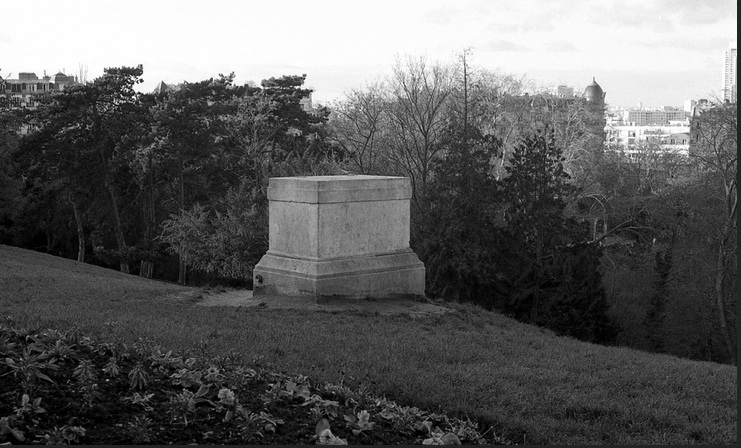
© » KADIST
Charlotte Moth
It is with the eye of a sculptor that Charlotte Moth records modernist architecture and its copies which she encounters during her trips and residences. Photographed in black and white, these architectures seem empty, out of time, and open to any interpretation. The artist creates a classification of her species of spaces, called the “Travelogue”, which is both artwork and tool since it allows her to ceaselessly generate new works.

© » KADIST
Emilija Škarnulyte
In the video, the artist follows her grandmother, Aldona, during her daily walk through the Grutas Park in Lithuania. Founded ten years after the collapse of USSR, this privately-owned sculpture park features close to a hundred Soviet-era statues collected from all over the country. As similar statues were often taken down or destroyed in neighboring Soviet countries, the sculpture park became a unique yet controversial resource.

© » KADIST
Anthony Goicolea
Drawing & Print (Drawing & Print)
Goicolea has made drawings based on a family album of relations that he did not know but who in one way or another contributed to his history and to the predicament in which he now finds himself as a Cuban in America. He then mounted the drawings on trees, telegraph poles or buildings and photographed them. Taken in these situations the drawings appear like advertisements for lost people or even posters for wanted criminals that of course conjures up images of loss not only of boat people but those who perished in other disasters, whether natural catastrophes or 9/11.

© » KADIST
Bruno Pacheco
En Guard Souvenir is composed of a group of eleven elements (ten paintings on paper and a sculpture) which deconstructs and recomposes the context of Tienanmen Square in Beijing. This square is known for numerous political events : the cultural revolution between 1966 and 1976, the arrest of the Gang of Four and protests in 1989 where thousands of demonstrators who were protesting against the corruption of the regime were killed. In this work, Bruno Pacheco alludes to the historical importance of this place, the choice of viewpoints reveals very precise but sporadic details there : part of the mausoleum devoted to Mao, a portrait of him and its frame, a view overlooking the Forbidden City, etc.

© » KADIST
Sung Hwan Kim
An early work in Sung Hwang Kim’s career, the video Summer Days in Keijo—written in 1937 is a fictional documentary, the film is based on a non-fiction travelogue, In Korean Wilds and Villages , written by Swedish zoologist Sten Bergman, who lived in Korea from 1935 to 1937. In Kim’s film, a Dutch female protagonist traces Bergman’s path in the present-day Seoul (Keijo was the Japanese name for Gyeongseong, currently Seoul). The protagonist navigates through spaces that have been rebuilt since the 1950s onwards, and the scenes are narrated by a voice-over based on Bergman’s written description of the modern city in 1937.
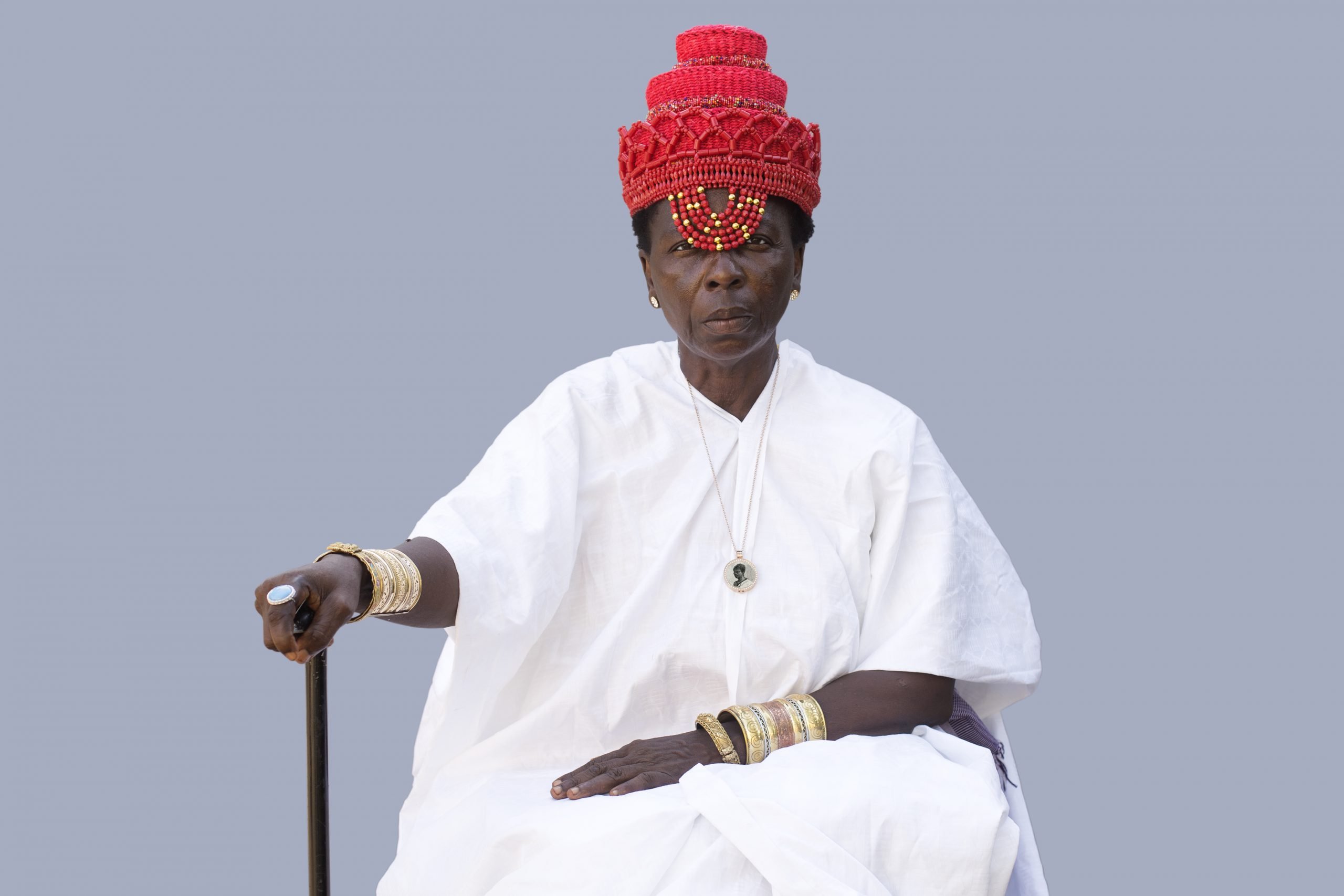
© » KADIST
Ishola Akpo
Noticing the lack of archives on the queens of various African kingdoms, artist Ishola Akpo created several series of work that retrace their history. Akpo uses different mediums in these projects, as a metaphor to the complex stories of the figures and their true political weight. One part of the project, the Agbara Women photographic series, employs fictional portraits that sheds light on the queens’ histories.
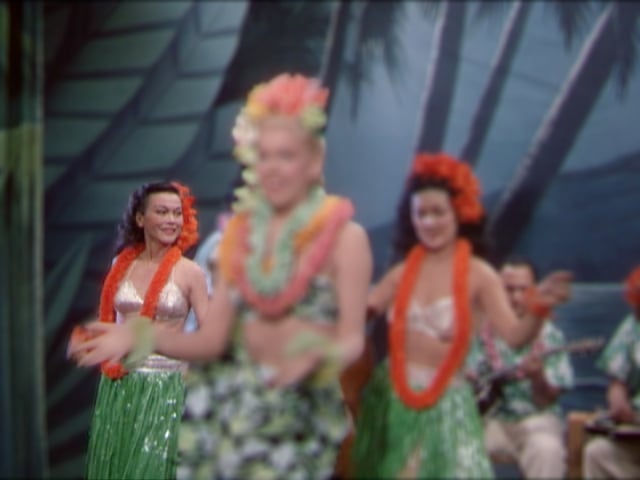
© » KADIST
Miljohn Ruperto
Miljohn Ruperto’s silent video work Appearance of Isabel Rosario Cooper is an archive of ghosts. The video’s title figure, a Filipina actress, vaudeville dancer and singer who played racialized, peripheral roles in Hollywood in the 1940s and 1950s, flits in and out of a montage of scenes. Ruperto digitally modified the 16mm film by blurring the background and all of the figures in each scene except for Cooper herself.

© » KADIST
Vvzela Kook
Columbus of Horticulture stems from Vvzela Kook’s ongoing research into the central and often-ignored role that botany played in the history of European imperialism. The colonial project, with its maritime explorations and voyages, was for the most part centred around the profits made from the discovery and exploitation of valuable plants (or from the kidnapping of the people needed to work on them). Vegetal products thus constituted a great part of the volume of the colonial economy, from spices to drugs, from textile fibres and dyes to tea, coffee, or cocoa.
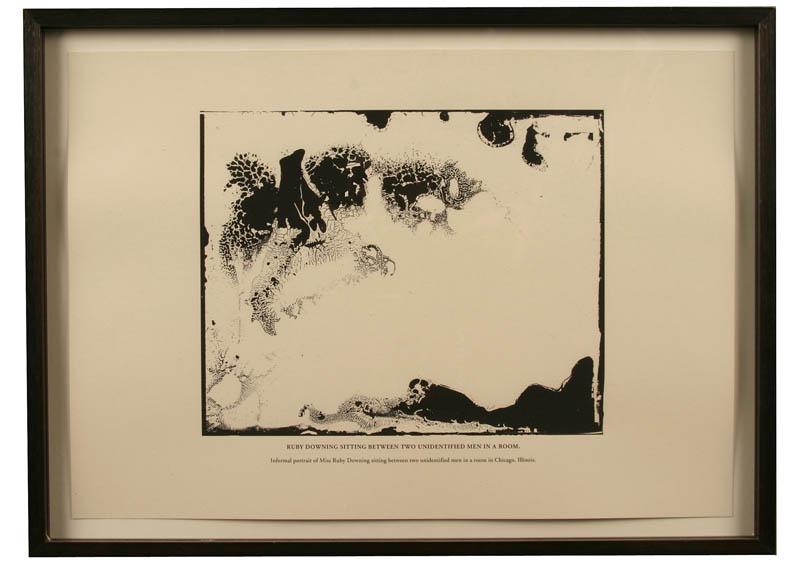
© » KADIST
Lisa Oppenheim
Drawing & Print (Drawing & Print)
The Damaged series by Lisa Oppenheim takes a series of selected photographs from the Chicago Daily News (1902 – 1933) as its source material. For this project, Oppenheim procured the original glass negatives, which had been damaged over time, from the archives of this newspaper. She then printed the negatives as is, highlighting the multitude of physical flaws that had ‘spoiled’ the negatives.

© » KADIST
Fang Lu
Canton Novelty by Fang Lu captures the adventure of a group of three girls, Ruohan, Lily and Zoe on a summer vacation in Guangzhou, China. Throughout the course of the trip, they film themselves with their cell phones singing in a karaoke room, shopping at a hardware store, sitting at a park, hanging out in a hotel room and exploring a neighborhood looking at vacant apartment ads. Although their days may seem uneventful, the girls seemingly discover the ability to perform impossible “miracles,” including cooking a full pot of rice from three grains, summoning objects to appear and disappear, and turning off street lamps on command.

© » KADIST
Mario Garcia Torres
Mario Garcia Torres discovered the work of artist Oscar Neuestern in an article published in ARTnews in 1969. This article, which is the only trace of his work, is indicative of a lack of interest by Neuestern to leave his name in history; to “defend an artistic activity that has little or no interest to last.” Oscar Neuestern could only remember the previous 24 hours, of which his life and his work are in constant erasure and reconstruction. His practice was “to let things be done with time and the unconscious,” while “not fearing the void.” He looked for the absolute through transparency and symmetry.
Gan Chin Lee
Gan Chin Lee is a Malaysian artist of Chinese descent known across Southeast Asia for his realist paintings that painstakingly register the ethnic and religious complexities of Malaysia...
siren eun young jung
With a practice deeply engaged with feminism and LGBT rights issues, siren eun young jung reveals the subversive power of traditional culture, one unknown in the Korean modernization period, and provides unique perspectives and documentation of important communities...
Subas Tamang
Part of the Indigenous Tamsaling community in Nepal, Subas Tamang comes from a family of traditional stone carvers...
Fabien Giraud & Raphael Siboni
The collaborative work of Fabien Giraud and Raphael Siboni is part of a reflection on the history of cinema, science, and technology...
Wang Tuo
Through film, performance, painting, and drawing, artist Wang Tuo interweaves disparate realities through archives, modern history, myth, and literature...
Lisa Oppenheim
- location: New York, New York
- year born: 1975
- gender: female
- nationality: American
- home town: New York, New York
Trevor Paglen
Trevor Paglen’s work combines the knowledge-base of artist, geographer and activist...
Helina Metaferia
Helina Metaferia is an interdisciplinary artist working across collage, assemblage, video, performance, and social engagement...
Maya Watanabe
Drawing on her background in theater design and direction, Maya Watanabe is known for her multi-channel video installations that explore the relationship between language, collectivity, identity, and space...
James T. Hong
James T...
Mario Garcia Torres
- location: Mexico City, Mexico
- year born: 1975
- gender: male
- nationality: Mexican
- home town: Monclova, Mexico
Sharif Waked
Sharif Waked is a Palestinian artist who’s work enages with with Islamic culture and history, and its interaction with the Israeli occupation and hegemonic Jewish culture in Palestine...
Runo Lagomarsino
- location: Malmo, Sweden
- location: Sao Paolo, Brazil
- year born: 1977
- gender: male
- nationality: Italian-Argentine-Swedish
- home town: Sweden
Anthony Goicolea
Goicolea, a first generation Cuban-American living in New York, makes work that explores his conflicted identity and the recent history of the Cuban people...
Erika Tan
Erika Tan’s practice is primarily research-driven with a focus on the moving image, referencing distributed media in the form of cinema, gallery-based works, Internet and digital practices...
Harit Srikhao
Harit Srikhao perceives photography as a culturally determined medium...
Minia Biabiany
Minia Biabiany’s practice is concerned with the past and ongoing effects of colonialism, exploring the poetics of resistance embedded in everyday life practices, and translating this research into the exhibition space through careful consideration of the cultural and spiritual implications of the material she uses, and the techniques she employs...
Rometti Costales
Rometti Costales is an artistic collaboration between Julia Rometti and Victor Costales that began in 2007...
Charlotte Moth
Charlotte Moth has been constituting an image bank since 1999...
Manuel Correa
Manuel Correa’s practice deals with the reconstruction of post-conflict intergenerational memory in contemporary societies...
Joana Hadjithomas & Khalil Joreige
Joana Hadjithomas and Khalil Joreige collaborate as both filmmakers and artists, producing cinematic and visual artwork that intertwine, spanning feature and documentary films, video and photographic installations, sculpture, performance lectures and texts...
Malik Nejmi
The practice of the French-Moroccan artist Malik Nejmi (b...
Patricia Esquivias
Working primarily in video, Patricia Esquivias’s work focuses on the material remains of idiosyncratic occurrences that connect to larger historical narratives...
Michelle and Noel Keserwany
Michelle and Noël Keserwany compose and perform their own songs, as well as contribute to the illustrations and animations featured in the videos they produced...
Dindga McCannon
Among the many roles she identifies with, Dindga McCannon is a multimedia visual artist, teacher, author and writer/illustrator...
Thomas Kilpper
- location: Stuttgart, Deutschland
- year born: 1956
- gender: male
- nationality: German
Brook Andrew
Brook Andrew is a Wiradjuri and Ngunnawal Aboriginal Australian artist and scholar whose interdisciplinary practice examines hegemonic narratives relating to colonialism and modernism...
Adrian Wong
- location: Hong Kong, China
- year born: 1980
- gender: male
- nationality: American
- home town: Chicago, Illinois
Wang Mowen
Trained as a photographer, artist Wang Mowen was born and raised in Dalian and she currently lives and works in Beijing...
Kota Ezawa
- location: San Francisco, California
- year born: 1969
- gender: male
- nationality: German
- home town: Cologne, Germany
-
1970-1979
David Goldblatt
1979David Goldblatt’s “Boksburg series” is a telling portrait of the small town that became a notorious symbol of racism in South Africa...
-
1980-1989
Santu Mofokeng
1985Since the global capital expansion, billboards have been the medium of communication between the rulers and the residents of townships...
-
2000-2009
Glenn Ligon
Drawing & Print
2000(Drawing & Print) Glenn Ligon’s diptych, Condition Repor t is comprised of two side-by-side prints...
Kota Ezawa
2002The Simpson Verdict is a three-minute animation by Kota Ezawa that portrays the reading of the verdict during the OJ Simpson trial, known as the “most publicized” criminal trial in history...
Artur Zmijewski
2002Zeppelintribüne (2002) was shot near the Zepelintribune in Nuremberg, designed by Albert Speer, chief architect of the Third Reich...
Lisa Oppenheim
Drawing & Print
2003(Drawing & Print) The Damaged series by Lisa Oppenheim takes a series of selected photographs from the Chicago Daily News (1902 – 1933) as its source material...
Lisa Oppenheim
Drawing & Print
2003(Drawing & Print) The Damaged series by Lisa Oppenheim takes a series of selected photographs from the Chicago Daily News (1902 – 1933) as its source material...
Lisa Oppenheim
Drawing & Print
2003(Drawing & Print) The Damaged series by Lisa Oppenheim takes a series of selected photographs from the Chicago Daily News (1902 – 1933) as its source material...
Mario Garcia Torres
2004Mario Garcia Torres imagines cinematic devices to replay stories occasionally forgotten by Conceptual art...
Kara Walker
2005In her masterpiece 8 Possible Beginnings or The Creation of African-America , Walker unravels just that, the story of struggle, oppression, escape and the complexities of power dynamics in the history following slave trade in America...
Daniel Joseph Martinez
2005Martinez’s sculpture A meditation on the possibility… of romantic love or where you goin’ with that gun in your hand , Bobby Seale and Huey Newton discuss the relationship between expressionism and social reality in Hitler’s painting depicts the legendary Black Panther leaders Huey P...
Bruno Pacheco
2006En Guard Souvenir is composed of a group of eleven elements (ten paintings on paper and a sculpture) which deconstructs and recomposes the context of Tienanmen Square in Beijing...
Prinz Gholam
2006Ein Ding Mehr , or ‘one more thing,’ is part of a long-term collaborative performance series by artists Wolfgang Prinz and Michel Gholam, which consist of the pair embodying an array of material through holding various poses for extended periods of time...
Sung Hwan Kim
2007An early work in Sung Hwang Kim’s career, the video Summer Days in Keijo—written in 1937 is a fictional documentary, the film is based on a non-fiction travelogue, In Korean Wilds and Villages , written by Swedish zoologist Sten Bergman, who lived in Korea from 1935 to 1937...
Aaron Young
2007The artist describes the work as “very performative video-pieces but they take on a more sculptural feel...
Ahmad Fuad Osman
2007Recollections of Long Lost Memories by Ahmad Fuad Osman is a series of 71 black and white sepia-toned archival photographs that chart, with nostalgia, the social encounters between hierarchies of life in the Malay world...
Anthony Goicolea
Drawing & Print
2008(Drawing & Print) Goicolea has made drawings based on a family album of relations that he did not know but who in one way or another contributed to his history and to the predicament in which he now finds himself as a Cuban in America...
Igor Grubic
2008366 Liberation Rituals is a series that gathers a number of actions related to the artist’s micro-politics...
Anthony Goicolea
2008Goicolea has made drawings based on a family album of relations that he did not know but who in one way or another contributed to his history and to the predicament in which he now finds himself as a Cuban in America...
Miljohn Ruperto
2009Miljohn Ruperto’s silent video work Appearance of Isabel Rosario Cooper is an archive of ghosts...
Thomas Kilpper
Drawing & Print
2009(Drawing & Print) These two images come from the series called “State of Control” which Kilpper made in the building formerly occupied by the Stasi in Berlin...
Fred Wilson
2009Fred Wilson’s flag paintings document the 20th century history of African people, indexing the period of liberation from colonialism...
Claudia Joskowicz
2009The primary interest in the trilogy is Joskowicz’s use of cinematic space, with long tracking shots that portray resistance to habitual viewing experiences of film and television...
-
2010-2019
Mary Reid Kelley
2010Situated in German-occupied Belgium at the end of World War I, Y ou Make Me Iliad by Mary Reid Kelley focuses on the story of two...
Adrian Villar Rojas
2010The two drawings in the Kadist Collection are part of a larger series entitled Las Mariposas Eternas (The Eternal Butterflies)...
The Propeller Group and Superflex
2010Fade In (the whole title of the film is actually the entire five page script) is a collaboration with the Danish artist collective Superflex (group of freelance artist–designer–activists committed to social and economic change, founded in 1993 by Jakob Fenger, Rasmus Nielsen and Bjørnstjerne Christiansen)...
Taiki Sakpisit
2011A Ripe Volcano , a collaboration with Yasuhiro Morinaga, revisits two sites of violence and aggression in Thailand’s recent past: The Rattanakosin Hotel, the site where the military troops captured and tortured the civilians, students and protestors who were hiding inside the hotel during the Black May of 1992; and Ratchadamnoen Stadium, a Roman amphitheater-style Muay Thai boxing arena, which was built in 1941-45 during the Second World War and since then has become the theatrical labyrinth for more acculturated and commercially “acceptable” displays of bloodshed...
Phi Phi Oanh
2011Palimpsest is a series of what artist Phi Phi Oanh calls “pictorial installations”...
Hong-Kai Wang
2011The video Music While We Work (2011) is the first part/work of a long-term research project started in 2010...
Frédéric Moser, Philippe Schwinger
2011In 1978, Jean-Luc Godard and Anne-Marie Miéville made the TV series: “France / tour / detour / two / children”, in which they aimed to identify the lifestyle of French people in 12 episodes of 26 minutes each...
Charlotte Moth
2012It is with the eye of a sculptor that Charlotte Moth records modernist architecture and its copies which she encounters during her trips and residences...
Felipe Arturo
2012Defined as entropy, the second law of thermodynamics proposes that energy is more easily dispersed than it is concentrated...
Minouk Lim
2012The Possibility of the Half by Minouk Lim is a two-channel video projection that begins with a mirror image of a weeping woman kneeling on the ground...
Miguel Angel Ríos
2012Superb production values and special effects that in the hands of Miguel Angel Rios do not get in the way or distracts from the content and deep essay of this work...
Karthik Pandian
2012Filmed in Morocco, the film Atlas by Karthik Pandian continues his investigation into history, site and monument...
Adrian Wong
2012Untitled (Grate I/II: Shan Mei Playground/ Grand Fortune Mansion) is part of a series drawn from architectural objects that mark the boundary of public and private spaces Wong encountered while strolling in Hong Kong...
Leah Gordon
2012The Caste Portraits Series by Leah Gordon investigates the practice of grading skin color from black to white, which marked the extent of racial mixing in 18th century Haiti...
Ícaro Lira
2012Icaro Lira has been developing the project “Museum of the Foreigner” since 2015, in which he recounts the trajectories of populations inside Brazil, from the north to the big cities of the south...
Ryan Gander
2012Epiphany…learnt through hardship is composed of a bronze sculpture depicting the model of the little dancer of Degas, in the pose of a female nude photographed by Edward Weston (Nude, 1936) accompanied by a blue cube...
James T. Hong
2012Taiwan WMD (Taiwan and Weapons of Mass Destruction) is part of a long-term research started in early 2010 on the history and aftermath effects of Japanese biological and chemical warfare in China during WWII, as well as the unknown history of Taiwan’s nuclear program...
Nandan Ghiya
2012The Chair (2012) foregrounds media-based tensions between analog and digital imaging technologies as a means of challenging the continued circulation of visual ephemera from India’s colonial past...
Charlotte Moth
2012It is with the eye of a sculptor that Charlotte Moth records modernist architecture and its copies which she encounters during her trips and residences...
Sharif Waked
2012Bath Time by Sharif Waked is a short video based on the tragi-comic outcome of the Israeli Blockade and the wars in Gaza...
Maya Watanabe
2013Three men with their backs to each other, dressed similarly in dark colors, stare straight at the camera...
Emilija Škarnulyte
2013In the video, the artist follows her grandmother, Aldona, during her daily walk through the Grutas Park in Lithuania...
Daniel Steegmann Mangrané
2013In the hologram “Mano con hojas” (”Hand with Leaves”, 2013), nature is portrayed simultaneously as an interconnected system of processes and the essence of the universe...
Rometti Costales
2013This anarchist flag is made from Huayruro seeds, a native plant of South and Central American tropical areas...
siren eun young jung
2013Deferral Archive is one of the archival extensions of siren eun young jung’s Yeoseong Gukgeuk Project (2008-), a decade-long ethnographic research project into the diminishing genre of Korean traditional theater known as Yeoseong Gukgeuk ...
Sharif Waked
2013Tughra is a protocol by Sharif Waked that reproduces the sixteenth century calligraphic monogram for tughra ; also known as the signature of Suleiman the Magnificent...
Haroon Gunn-Salie
2013Executed on Sunday 17 August 2013, “Zonnebloem renamed” is a site-specific performative video film marking the centenary of the 1913 Natives Land Act in South Africa...
Yu Honglei
2013Yu Honglei’s video and mixed media works riff on familiar motifs from the Western art historical canon and reimagine them through a playful but subversive culture jamming of their original meaning...
Nicolás Grum
2014El gran pacto de Chile (The Great Pact) and La balserita de Puerto Gala (The Raft) were part of the “Museo Futuro”, an exhibition in which the artist presented nine miniature dioramas staging fragments of Chile’s history, from its colonial invasions to the present...
Mimian Hsu Chen
2014In Hsu’s work, Colonia China (2014), the artist documents a Chinese cemetery of Costa Rica’s Limón Province, along the country’s Caribbean coast...
Baris Dogrusöz
2014The series of works gathered under the title Heure de Paris combines footage of Turkey from Turkish and French media reportage from the 1980s...
Little Warsaw
2014Jaali – Horizontal references religious practices in Hungary that were considered as a civil disobedience throughout the 1950s...
Maya Watanabe
2014In Escenarios (Sceneries) Maya Watanabe films forgotten wastelands through a series of 360° camera movements that highlight the dramatism and visual richness of terrain that would be otherwise forgotten...
Nicolás Grum
2014El gran pacto de Chile (The Great Pact) and La balserita de Puerto Gala (The Raft) were part of the “Museo Futuro”, an exhibition in which the artist presented nine miniature dioramas staging fragments of Chile’s history, from its colonial invasions to the present...
Malik Nejmi
2014La Chambre Marocaine series is a means to reconnect personally to his connection to family history and objectively assess the process of reconnection...
Fabien Giraud & Raphael Siboni
2014– In which defeated he leaves the scene and the stage is left in search of its scale – Second episode of The Unmanned series, “The Brute Force” reconstructs the minutes following Garry Kasparov’s defeat against the IBM Deep Blue computer on 11 May 1997...
Arseny Zhilyaev
2014The Bolotnaya Battle Park Complex is the future home for the Museum of Russian History (M...
Voluspa Jarpa
2014In her work, Fantasmática Latinoamericana, Jarpa works from photographs of five public funeral processions following the mysterious deaths of five Latin American presidents...
Naresh Kumar
Drawing & Print
2015(Drawing & Print) “Relation between Black and blood” explores the connection between performance, installation and representation...
siren eun young jung
Drawing & Print
2015(Drawing & Print) Deferral Archive is one of the archival extensions of siren eun young jung’s Yeoseong Gukgeuk Project (2008-), a decade-long ethnographic research project into the diminishing genre of Korean traditional theater known as Yeoseong Gukgeuk ...
siren eun young jung
2015Deferral Archive is one of the archival extensions of siren eun young jung’s Yeoseong Gukgeuk Project (2008-), a decade-long ethnographic research project into the diminishing genre of Korean traditional theater known as Yeoseong Gukgeuk ...
Mathieu Abonnenc
2015Secteur IX B is full of ghosts: some that you can see, briefly appearing at the turn of a statue in an under construction museum, some that you only dream of when you switch from day to night, of one space to another...
Mariana Castillo Deball
2015Taking archaeology as her departure point to examine the trajectories of replicated and displaced objects, “Who will measure the space, who will tell me the time?” was produced in Oaxaca for her exhibition of the same title at the Contemporary Museum of Oaxaca (MACO) in 2015...
José Castrellón
2016Palo Enceba’o is a project by José Castrellón composed of three photographs, two drawings on metal, and a video work that creates a visual and cultural analogy between the events of January 9th, 1964 in Panama City and the game of palo encebado carried out in certain parts of Panama to celebrate the (US-backed) independence from Colombia...
Didem Pekün
2016Of Dice and Men is a video diary-essay: in it, Didem Pekün’s daily life and political events are intertwined, just as they are in our individual realities...
Corey McCorkle
2016Corey McCorkle’s 2016 installation Pendulum is developed around the Cavendish family and their role in importing bananas to Europe...
Park Chan-Kyong
2016Park Chan-Kyong’s film Citizen’s Forest draws on two works for which the artist has a particular fondness: The Lemures , an incomplete painting by Korean artist Oh Yoon, and Colossal Roots , a poem by Korean poet Kim Soo-Young...
Uriel Orlow
2016The series The Memory of Trees is specifically about trees, and what trees have witnessed in South Africa: for example, trees that were used as locations for slave trading, or trees that was during the anti-Apartheid struggle as a kind of identifier for a safe house for activists who were fleeing from security forces...
José Castrellón
2016Palo Enceba’o is a project by José Castrellón composed of three photographs, two drawings on metal, and a video work that creates a visual and cultural analogy between the events of January 9th, 1964 in Panama City and the game of palo encebado carried out in certain parts of Panama to celebrate the (US-backed) independence from Colombia...
José Castrellón
2016Palo Enceba’o is a project by José Castrellón composed of three photographs, two drawings on metal, and a video work that creates a visual and cultural analogy between the events of January 9th, 1964 in Panama City and the game of palo encebado carried out in certain parts of Panama to celebrate the (US-backed) independence from Colombia...
Kapwani Kiwanga
2017Flowers for Africa is a protocol project started in 2014, which questions the material that history is made of: its fragility, its infallibility, its visibility and its hierarchy...
Chikako Yamashiro
2017The film installation Mud Man by Chikako Yamashiro is set on Okinawa and South Korea’s Jeju Islands, two locations at the center of local controversies surrounding the presence of the United States military...
Joana Hadjithomas & Khalil Joreige
2017Produced for the Prix Marcel Duchamp and presented at the Centre Pompidou in October 2017, the installation Uncomformities is comprised of photographs, archaeological drawings, and narratives, based on the analysis of core samples from different sites in Beirut, Paris and Athens...
Erbossyn Meldibekov
2017Game (Six Pieces) by Erbossyn Meldibekov is inspired by the popular Rubik’s cube puzzle and is composed of three colors (red, green and white) instead of six, referencing the colors of the Afghan flag...
Fredi Casco
Drawing & Print
2017(Drawing & Print) Pascua Dolorosa (Painful Easter) by Fredi Casco is a series of drawings made on old worksheets documenting land surfaces in Caapucú, a forest exploitation area where one of the most violent episodes of the repression of Stroessner’s dictatorship took place in 1976, and during which peasants accused of belonging to insurgent movements were kidnapped, tortured and many of them killed...
Abigail DeVille
2017The work La Loge Harlem focuses on the history of Harlem and its development over the last 200 years...
Diego Marcon
2017Monelle by Diego Marcon was filmed at night inside the infamous Casa del Fascio, the headquarters of the local Fascist Party in Como Italy, designed by Giuseppe Terragni under Mussolini’s rule...
Jorge Julián Aristizábal
Drawing & Print
2017(Drawing & Print) La Masacre de el Aro (The Massacre of El Aro) by Jorge Julián Aristizábal refers to a massacre in Colombia which occurred on October 22, 1997 in the municipality of Ituango, Department of Antioquia...
Fabien Giraud & Raphael Siboni
2017– In whiche a lemyng starre returneth in the yeer foretolde and alle thing that spak to us turneth ayeyn to silence – Sixth episode of The Unmanned and sharing the same camera movements as the episode “1997 – The Brute Force”, “Mil troi cens quarante huyt” refers to the appearance of a comet in 1759 – thus validating the computation and rational prediction of its return by the British astronomer and mathematician Edmond Halley...
Clarissa Tossin
2017Clarissa Tossin’s film Ch’u Mayaa responds to Frank Lloyd Wright’s Hollyhock House (constructed 1919–21) in Los Angeles, an example of Mayan Revival architecture...
Jackie Karuti
2017The Planets, Chapter 32 (2017) is a short video that depicts the world at a time of great anxiety...
Karan Shrestha
2017After the decade-long conflict (1996-2006) that ended with Nepal becoming a Federal Democratic Republic, political unrest and weak governance continued to mark the country’s future as daily life repeatedly witnessed ruptures...
Fabien Giraud & Raphael Siboni
2018– In which an intelligence going back to its place of origin discovers the agony of gods on which it thrives – Seventh and last episode of The Unmanned , “a flood” is set in 1542 as the first conquistadors enter the land later to be known as the Silicon Valley...
Juan Brenner
2018The photographic series Tonatiuh (The Son of the Sun) by Juan Brenner is an in-depth visual study of current Guatemalan society from the perspective of miscegenation and the incalculable consequences of the Spanish conquest...
Subas Tamang
Drawing & Print
2018(Drawing & Print) Study of History IV by Subas Tamang is an etching and aquatint print based on photographs taken by German photographer Volkmar Wentzel in 1949...
siren eun young jung
Drawing & Print
2018(Drawing & Print) Deferral Archive is one of the archival extensions of siren eun young jung’s Yeoseong Gukgeuk Project (2008-), a decade-long ethnographic research project into the diminishing genre of Korean traditional theater known as Yeoseong Gukgeuk ...
Christian Nyampeta
2018The film Sometimes It Was Beautiful by Christian Nyampeta poetically addresses the systemic conditions leading and emerging from the 1994 Rwandan genocide, which had lasting and profound effects on Rwanda and neighbouring countries like Congo...
Abraham Oghobase
2018This series of photographs is inspired by the artist’s travels to Jos, Nigeria...
Che Onejoon
2018Che Onejoon’s unsettling video My Utopia opens with a round table of women asking and answering the questions “Who am I? Where did I come from? Where should I go?” One of the women featured is Monique Macías, the daughter of Francisco Macías Nguema, the first Prime Minister of Equatorial Guinea...
Native Art Department International
2018The neon sign Walk the Walk (Sam Durant) overlays a Walk/Don’t Walk Sign crosswalk sign onto the text “You Are On Indian Land Show Some Respect.” The sign asks viewers to not walk on Indigenous lands without respecting it, and, switching between a walking person icon in white and a raised hand icon in red, redirects their actions...
siren eun young jung
2018Taking the same name as their most recent solo show at the Kunstverein für die Rheinlande und Westfalen in Düsseldorf, siren eun young jung’s video work Deferral Theatre intertwines various threads from the last decade of the artist’s research into the Yeoseong Gukgeuk theatrical form, in which all of the roles are played by women, as well as performance-based modes of queer resistance in South Korea...
Calderón & Piñeros (La Decanatura)
2018Calderón & Piñeros (La Decanatura) refer to Sólheimasandur as a work that tackles the issue of “the ruin as a tourist destination.” As they say, “at the end, tourists become an essential part of this unusual, beautiful, and—at the same time—banal landscape.” The video features a plane wreck on Sólheimasandur beach in Iceland, where a navy plane belonging to the United States Army crashed in 1973 due to fuel exhaustion...
Subas Tamang
Drawing & Print
2018(Drawing & Print) Study of History V by Subas Tamang is an etching and aquatint print based on photographs taken by German photographer Volkmar Wentzel in 1949...
Subas Tamang
Drawing & Print
2018(Drawing & Print) Study of History III by Subas Tamang is an etching and aquatint print based on photographs taken by German photographer Volkmar Wentzel in 1949...
Jakrawal Nilthamrong
2018Invalid Throne by Jakrawal Nilthamrong is a 35mm film that searches the protagonist Kamjorn Sankwan’s memory and connection with the land he grew up in...
Vvzela Kook
2019Columbus of Horticulture stems from Vvzela Kook’s ongoing research into the central and often-ignored role that botany played in the history of European imperialism...
Gan Chin Lee
Drawing & Print
2019(Drawing & Print) In Studies of Chinese New Villages II Gan Chin Lee’s realism appears in the format of a fieldwork notebook; capturing present-day surroundings while unpacking their historical memory...
Gan Chin Lee
Drawing & Print
2019(Drawing & Print) In Studies of Chinese New Villages II Gan Chin Lee’s realism appears in the format of a fieldwork notebook; capturing present-day surroundings while unpacking their historical memory...
Angela Su
Drawing & Print
2019(Drawing & Print) In the first part of Cosmic Call by Angela Su the voiceover proposes in a neutral, documentary-like tone, a series of stories to rethink the way we usually understand, justify, or place blame for epidemiological events...
Gan Chin Lee
Drawing & Print
2019(Drawing & Print) In Studies of Chinese New Villages II Gan Chin Lee’s realism appears in the format of a fieldwork notebook; capturing present-day surroundings while unpacking their historical memory...
Helina Metaferia
2019By Way of Revolution is a series of works by Helina Metaferia that addresses the inherited histories of protest that inform contemporary social movements...
Gan Chin Lee
Drawing & Print
2019(Drawing & Print) In Studies of Chinese New Villages II Gan Chin Lee’s realism appears in the format of a fieldwork notebook; capturing present-day surroundings while unpacking their historical memory...
Shubigi Rao
2019Named after a book that artist Shubigi Rao read growing up, The Yellow Scarf explores the history of the Thuggee cult in India in relation to the colonial British administration that ‘discovered’ but also ultimately exterminated this cult of assassins...
Gan Chin Lee
Drawing & Print
2019(Drawing & Print) In Studies of Chinese New Villages II Gan Chin Lee’s realism appears in the format of a fieldwork notebook; capturing present-day surroundings while unpacking their historical memory...
Sarah Navqi
2019A “mata ni pachedi” is a piece of painted textile that depicts narrative images of goddesses...
Musquiqui Chihying
2019The Sculpture by Musquiqui Chihying comprises a two-channel lecture performance and a photograph...
Gan Chin Lee
Drawing & Print
2019(Drawing & Print) In Studies of Chinese New Villages II Gan Chin Lee’s realism appears in the format of a fieldwork notebook; capturing present-day surroundings while unpacking their historical memory...
Gan Chin Lee
Drawing & Print
2019(Drawing & Print) In Studies of Chinese New Villages II Gan Chin Lee’s realism appears in the format of a fieldwork notebook; capturing present-day surroundings while unpacking their historical memory...
Luka Yuanyuan Yang
2019Composed of three photographic panels, Three Times at Yamato Hotel by Luka Yuanyuan Yang is a part of the artist’s ongoing project Dalian Mirage , a seven act play in a theatre staged as the city of Dalian...
Noé Martínez
2019As he investigates the forms that slavery took through different events that occurred during the sixteenth century in the Huasteca region of Mexico, Noé Martínez tells, in a non-linear narrative, the history of human trafficking in Relación de tráfico de personas 1525-1533 I (Study of Trafficking of Persons 1525–1533 I) ...
Gan Chin Lee
Drawing & Print
2019(Drawing & Print) In Studies of Chinese New Villages II Gan Chin Lee’s realism appears in the format of a fieldwork notebook; capturing present-day surroundings while unpacking their historical memory...
Matthew Lutz-Kinoy
2019The Lion’s Hunt by Matthew Lutz-Kinoy is a large format painting that recalls Delacroix’s paintings and tapestries from the 19th century, where the painterly surface became a garden invaded by wild beasts...
Gan Chin Lee
Drawing & Print
2019(Drawing & Print) In Studies of Chinese New Villages II Gan Chin Lee’s realism appears in the format of a fieldwork notebook; capturing present-day surroundings while unpacking their historical memory...
Rometti Costales
2019Canción para un fósil canoro (Song for a chanting fossil) by Rometti Costales is inspired by the history of the building that currently hosts the Museo de la Solidaridad Salvador Allende (MSSA) in Santiago, Chile...
Gan Chin Lee
Drawing & Print
2019(Drawing & Print) In Studies of Chinese New Villages II Gan Chin Lee’s realism appears in the format of a fieldwork notebook; capturing present-day surroundings while unpacking their historical memory...
Guy Woueté
2019The video installation Le Fou Postcolonial Insane by Guy Woueté is a series of five videos that examine the concept of insanity in the post-colonial Democratic Republic of Congo...
Noara Quintana
2019The series Belle Époque of the Tropics by Noara Quintana has as its background the history of the rubber industrialization in North of Brazil...
Chia-Wei Hsu
2019Stones and Elephants by Chia-Wei Hsu derives from the Malay literary classic The Hikayat Abdullah ...
Musquiqui Chihying and Gregor Kasper
2019Addressing the legacy of colonialism, The Guestbook by Musquiqui Chihying and Gregor Kasper is a slow-paced, black-and-white film exploring the German colony of Togoland, now the Republic of Togo...
Ruth Patir
2019Historical representations of the female form and the clichés and misunderstandings that surround them have been the subject of recent research and historical revision...
Wang Mowen
2019In Trinity , Wang Mowen uses video to tell the story of a young woman who wants to know the whereabouts of a person born sixty years ago...
Gan Chin Lee
Drawing & Print
2019(Drawing & Print) In Studies of Chinese New Villages II Gan Chin Lee’s realism appears in the format of a fieldwork notebook; capturing present-day surroundings while unpacking their historical memory...
Minia Biabiany
2019Qui vivra verra, Qui mourra saura is an installation by Minia Biabiany composed of the plan of a house made out of strips of salt, and a “garden” made of ceramic pieces, hanging from the ceiling and on the floor, and non woven fabric...
-
2020-2029
Manuel Correa
2020Manuel Correa’s documentary Four Hundred Unquiet Graves is a powerful and vulnerable visual essay about the descendants of those who were disappeared during the Spanish Civil War from 1936–1939...
Minia Biabiany
2020Musa is a visual and textual work by Minia Biabiany and the starting point of a broader research around the sexuality of Caribbean women, the historical legacy of slavery, and the artist’s own female lineage...
Runo Lagomarsino
Drawing & Print
2020(Drawing & Print) On Fire by Runo Lagomarsino comprises twenty pieces of parchment, each of which has had the contours and map of Brazil burned in stages...
Runo Lagomarsino
2020Yo también soy humo (I am also smoke) is a 16mm film that has been digitized to video...
Trevor Paglen
2020The Black Canyon Deep Semantic Image Segments by Trevor Paglen merges traditional American landscape photography (sometimes referred as ‘frontier photography’ for sites located in the American West) with artificial intelligence and other technological advances such as computer vision...
Manuel Correa
2020Manuel Correa’s short film Didn’t Know I Died is a testimonial portrait of the acclaimed Colombian poet Olga Elena Mattei...
Patricia Esquivias
2020Cardón Cardinal by Patricia Esquivias is part of a series of video works in which the artist develops a narrative in front of her computer screen...
Ciprian Muresan
2020Forgotten Statues , 2020 continues the artist’s reflections on power and the fragility of works of art...
Anton Vidokle
2020Shot in Oliveto Lucano, a village in the south of Italy, AUTOTROFIA (meaning self-eating) by artist Anton Vidokle is a cinéma vérité style film that slides fictive characters into real situations, and vice-versa, to draw a prolonged meditation on the cycle of life, seasonal renewal, and ecological awareness...
Brook Andrew
2020This year: missing witness by Brook Andrew consists of a multi-layered collage of photographs...
Trevor Paglen
2020Half Dome Hough Transform by Trevor Paglen merges traditional American landscape photography (sometimes referred as ‘frontier photography’ for sites located in the American West) with artificial intelligence and other technological advances such as computer vision...
Hikaru Fujii
2020The film The Anatomy Classroom is part of a research project developed by Hikaru Fujii around objects and artifacts evacuated from the Futaba Town Museum of History and Folklore, which is located in the “difficult-to-return zone” since the Fukushima Daiichi nuclear accident...
Subas Tamang
Drawing & Print
2020(Drawing & Print) Study of History VI by Subas Tamang is an etching and aquatint print based on photographs taken by German photographer Volkmar Wentzel in 1949...
Leyla Stevens
2021Leyla Stevens’s two-channel video Patiwangi, the death of fragrance is an immersive video installation that addresses erased histories...
Ishola Akpo
2021Noticing the lack of archives on the queens of various African kingdoms, artist Ishola Akpo created several series of work that retrace their history...
Soufiane Ababri
Drawing & Print
2021(Drawing & Print) Soufiane Ababri’s desire to construct a historical family and a genealogy of queer kinships in Bedwork / Yes I AM sees him conjuring up a pantheon of gay writers and artists whose intellect has changed the course of human history and development, despite their outsider status...
Kent Chan
2021Heat Waves by Kent Chan examines the contexts, politics, and proliferation of the different aesthetics of heat by drawing from the aesthetics of regions defined by hot and humid climates and associated with histories of coloniality such as ‘the global south’ and the ‘developing world’...
Subas Tamang
Drawing & Print
2021(Drawing & Print) Masiniya Matawali by Subas Tamang is an etching and aquatint print based on photographs taken by German photographer Volkmar Wentzel in 1949...
Dindga McCannon
2021Dindga McCannon created the radiant portrait Ima: Real Estate Mogul from the Harlem Women’s Series by first stitching material together with a sewing machine and then using more traditional painting techniques to render a portrait of Ima, a woman from Harlem who was a real estate developer from the 20th century...
Lotus Laurie Kang
2022Scaffold by Lotus Laurie Kang features a seemingly disjointed amalgamation of materials between flat fabrics and lumps of aluminum...
Tessa Mars
2022In this untitled acrylic painting, Tessa Mars explores the long-lasting effects of colonialism on the Afro-Caribbean diaspora, particularly in terms of female vulnerability and resilience...
James Webb
2022Referencing psychology, philosophy, and spiritualism, A series of personal questions addressed to a Hikimawashi kappa traveling coat by James Webb is an ongoing series in which the artist poses spoken questions to objects via a speaker installed near the object on display...
Farah Al Qasimi
2022Um Al Dhabaab (Mother of Fog) by Farah Al Qasimi addresses the myth of Al Qasimi tribe-instigated piracy in the Gulf, perpetuated by the British Empire and upheld by contemporary western academia...
Dread Scott
2022In conjunction with his first NFT sale of White Male Dread Scott made and circulated a poster titled Whites For Sale ...
Michelle and Noel Keserwany
2022Les Chenilles by Michelle and Noël Keserwany is a sensual film that translates the source of women’s oppression into the means for their liberation...
Risham Syed
2022Risham Syed discovered a box of woven Chinese silk panels that was her mother’s most prized possession...
Sofia Crespo
2023This short looped-video NFT Invertebrate Interactions by Sofia Crespo aims to capture generated impressions of diatoms...
Helina Metaferia
2023By Way of Revolution is a series that addresses the inherited histories of protest that inform contemporary social movements...
Helina Metaferia
2023By Way of Revolution is a series of works by Helina Metaferia that addresses the inherited histories of protest that inform contemporary social movements...




